Matador Network's Blog, page 52
April 18, 2025
To Find the Heart and Soul of Cartagena, Start With One Iconic Restaurant and One of the World’s Top Bars
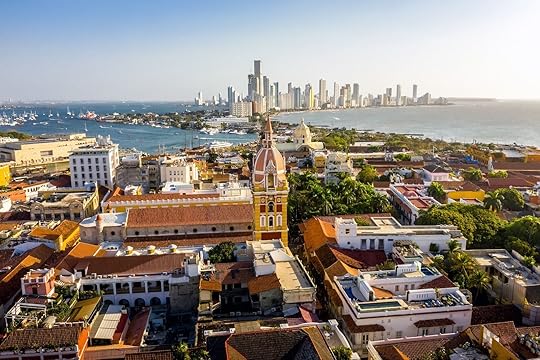
Juan Del Mar — restaurateur, singer, actor, and, local legend — is a recognizable figure in Cartagena across generations. His namesake restaurant, Juan Del Mar, has become an institution as the restaurant scene in the city has rapidly evolved.
On the latest No Fixed Address podcast, host Michael Motamedi and producer Vanessa Salas, who was born in Colombia, joined Del Mar in Cartagena as he judged the first patacón festival held to celebrate Colombia’s iconic snack food.
“He’s been a staple of Cartagena forever,” Salas says. “And sometimes I think like he’s such a really good representation of the city because he’s lively. He’s totally himself. He’s vibrant.”
Motamedi add, “he’s like literally the unofficial mayor of the city. We’re walking down the streets, I swear to you, we couldn’t go literally a couple feet without somebody trying to take a selfie with him. Or I would see people, I was walking behind him as we were reporting, ‘that’s Juan, that’s Juan, that’s Juan.’ I felt like a celebrity walking with him. Like it was almost like Brad Pitt was taking us around town. And the best part, you’ll be having dinner, waiting for your meal, and all of sudden, he’s on stage and he’s singing and he has your wife and he’s dancing. At least that’s what happened to me.”
Alquímico: Cocktails as communityA short walk from Juan Del Mar’s restaurant, the three-story cocktail temple Alquímico offers another lens into Cartagena’s soul. Motamedi and Salas stopped by to speak with the man behind the bar: Jean Trinh, a French-Vietnamese bartender turned local advocate. Alquímico is ranked among the world’s best not simply for its drinks, but for its vision.
Each floor at Alquímico presents a distinct menu. On the ground level, the “Comunidad” menu ties cocktails directly to social impact, supporting farmers in Los Montes de María, a region rebuilding from decades of violence. Trinh’s team partners with these farmers to fund infrastructure like water filtration systems. The farmers’ portraits — some sketched, some photographed — appear on the menu.
But Alquímico’s innovation runs deeper than design. Colombia’s biodiversity is the highest in the world per square meter, and this forms the foundation of the ingredients used at Alquímico. Trinh recounts finding more than 40 types of mango in just one nearby region, for example. His team experiments with herbs, fruits, and yuca in the cocktails, fitting each into a narrative.
At the heart of both Del Mar’s and Trinh’s philosophies is a shared reverence for Colombian cultural values. “We love to smile. We love to hug. We love to touch,” Del Mar says on the podcast.
While Cartagena’s culinary scene has matured in the past two decades, both voices resist the idea of trend-chasing. Del Mar notes that restaurants are now more committed to honoring Colombian cuisine than in years past. Trinh praises local establishments like Sellele, El Barón, and El Sombrero, each offering a different tier of experience, from high-end R&D-driven tasting menus to humble street-side ceviche.
Del Mar leaves visitors with the phrase todo bien, a cultural shorthand for acceptance, ease, and presence. It’s a worldview that’s easy to see in Cartagena itself. 
National Park Week: 12 Reasons Our Travel Editors Love National Parks
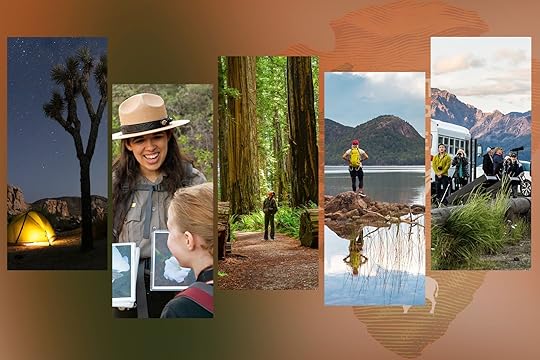 Join Matador Network in Celebrating National Park Week 2025
Join Matador Network in Celebrating National Park Week 2025We love the outdoors at Matador Network. In the United States, some of the best outdoor recreation can be found on federal- or state-protected lands — particularly in the West — and that’s also where most people go when looking for experiences that challenge, enlighten, and bring the beauty of nature to the forefront. Public lands are the key to everything we love about the great outdoors, like clean air and water, healthy forests, and North America’s diverse range of flora and fauna.
National Park Week, from April 19-27 in 2025, is a chance to recognize and celebrate just one segment of these public lands.
Since Matador Network’s founding in 2006, we’ve covered some of the many things that are only possible in national parks. We’ve also advocated for their protection, expansion, and use, whether that means hiking some of the most extreme trails in the world or taking a bucket-list vacation to look for wildlife in sprawling parks.
As national parks face one of the most turbulent times in their history since Yellowstone became the world’s first national park in 1872, we’re celebrating National Park Week with urgency, not just admiration. In 2024, parks received a record-breaking 331 million visits. They’re popular domestically and internationally, and aLao have a big impact on local communities: studies have found national parks generate roughly $10 in economic benefit for every $1 invested. Still, the current administration has reduced protections and threatened access to public lands as a whole. Key access points are being considered for sale to private companies and individuals, and drilling and mining contracts threaten environments that have flourished without human intervention.
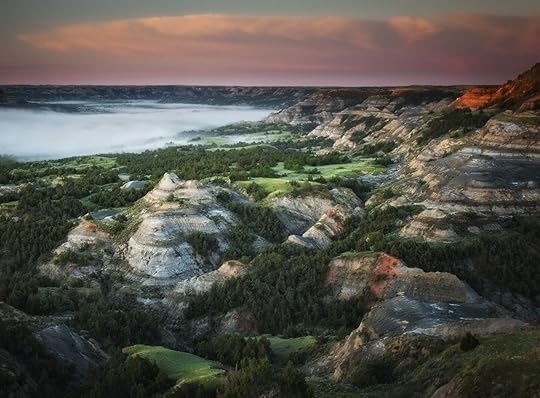
The North Unit of Theodore Roosevelt National Park. Photo: NPS/Public Domain
It’s a frightening moment for the environment. As we know, it has been, since roughly the mid-1700s, when humans started significantly contributing to climate change and making large-scale, irreversible changes to the global landscape. But
National Parks are for the people, but also for the environment. With scientists warning we’re nearing the point of no return on planetary heath, it’s more critical than ever to be part of the solution and support our national parks for ourselves and future generations.
The easiest way to do so is to share what makes our national parks so special and to encourage people to do the same. And, importantly, experience for themselves all that is possible on these public lands. For the next nine days and beyond, we encourage you to spend a few minutes a day thinking about national parks. Dream about your next long-distance hike, plan your next park vacation, and map out an overly ambitious road trip to every national park in the country.
What is National Park Week?
Photo: Zion National Park/NPS/Kristin Wilson
National Park Week is an annual celebration organized by the National Park Service to highlight the importance of America’s 400-plus sites managed by the agency. These sites are critical to North America’s environmental health, but also protect some of the most beautiful, historical, and culturally significant sites on the continent. While it’s technically only a US event, it’s a great chance to celebrate and explore national parks around the world. As of 2025, roughly 200 countries have some version of a national park system — though Yellowstone National Park, established on March 1, 1872, is widely recognized as the first national park in the world.
Ways to celebrate National Park Week 2025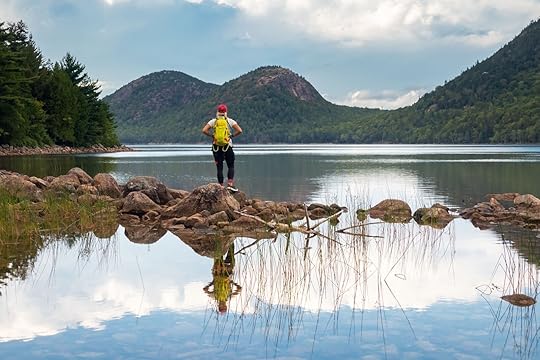
A hiker in Acadia National Park, Maine. Photo: Michael Carni/Shutterstock
In 2025, National Park Week will take place from April 19 to April 27. Almost every single site in the National Park Service system will have events going on through the week, but one thing they all have in common is a free-free day on April 19, 2025. That means admission to every single NPS site that day is free (though there are still fees for amenities, camping, etc). This year, NPS has a fun day-by-day list of activities for national park fans, whether you’re in the park, or not. Activities range from using official hashtags on certain days to sharing park photos on social media to learning about the role lesser-known figured have played in the formation of national parks.
For example, did you know that one of the first-ever people to explore and map Mammoth Caves National Park in Kentucky was Stephen Bishop? He was brought to the site while enslaved in the 1830s, taught himself geology and cave exploration, and made the first map of the entire cave system.
10 things you can do from home for National Park WeekWith more than 400 sites managed by the National Park Service, getting to a site to celebrate National Park Week 2025 may be easier than you think. And it matters — showing that public parks are popular and beloved goes a long way when it comes to convincing elected officials to protect them.
But if you can’t make it to a site, you can still show your support for public parks from afar. Here are 10 ways to do it during National Park Week 2025.
Take a virtual tour: Explore parks like Yellowstone, Grand Canyon, or Arches through digital tours and webcams, which showcase geysers, trails, and panoramic views. You can also watch live webcam at any parks. For example, you can watch Old Faithful erupt at Yellowstone, watch water cascade over massive Yosemite Falls in California, or watch Kilauea smolder in Hawai’i Volcanoes National Park. Create a National Park playlist: Curate music inspired by your favorite parks or trips and share it on social media using #NationalParkWeek and #NationalParkPlaylist.Support parks from afar: Donate to conservation organizations or directly to official park non-profits.Need a t-shirt or coffee mug? Shop for park-themed gear from official national park stores, or places like Landmark Project or the Parks Project. Volunteer locally: Plant a tree in your yard, volunteer with a local community clean-up group, or just go for a walk where you pick up any trash you see along the way.Enter a national parks photo contest, such as this one, running through August 2025.Listen to a national park podcast: Many parks themselves have their own podcasts, and NPS as a whole offers My Park Story , profiling interesting people with unique connections to parks. The National Parks Conservation Associations runs an interesting podcast called The Secret Lives of Parks , and Everybody’s National Parks blends personal stories from parks with expert interviews and insight. Spread the word about National Park Week 2025: Tell your friends in person, or spread the word on social media using the official National Park Week 2025 hashtag: #NationalParkWeek. Sharing photos, a quick blurb about your favorite national park memory, or even this article, will help raise awareness of national parks and their need. Host a National Park Week 2025 get-together: Invite friends over for a backyard bonfire (if they’re allowed where you live) or host a movie night where you stream fantastic national park shows, like Our Great National Parks on Netflix. Plan your next parks trip: Even if you don’t have the time off arranged, plan a hypothetical national parks vacation. Whether you’re road-tripping to Zion or doing something much, much longer, you can still have fun exploring the hotels, viewpoints, and bucket-list trails you’ll hike when you do have time to make it happen12 Reasons Matador Network loves national parksPhoto: Arches National Park/NPS/Neal Herbert 1. National parks protect important cultural sites
Wichita War Dancer speaks to the audience. Greg Victors, also known as the Wichita War Dancer, kicked off Homestead NHP’s National Park Week activities from 1-2 pm on April 20, 2024. Photo: /NPS
America’s national parks play a vital role in preserving the country’s cultural and historical legacies. Parks protect sacred Indigenous sites, historic landmarks, and landscapes that shaped the nation’s identity, from Civil War battlefields to sites of struggles for equality to ancient cliff dwellings. Without protections, many of these sites would be gone forever, taking away from future generations the chance learn from and reflect on pivotal moments in American history. As philosopher George Santayana said, “Those who cannot remember the past are condemned to repeat it.” Preserving and remembering our history is a chance for us to remember, honor, and learn from the high and low points in America’s complicated, fascinating history. Read about seven important LGBTQIA+ heritage sites in the National Park Service you should visit Read about three sites in California with strong Indigenous and current-day cultural links that became national monuments (or could become them soon)Read about recent discoveries at Alcatraz Island, an NPS site once used as a maximum security island prisonNPS is always adding new cultural sites, like this one added last year in Marfa, Texas. Did you know there are dozens of UNESCO World Heritage Sites in national parks?2. National parks support a massive outdoor economy
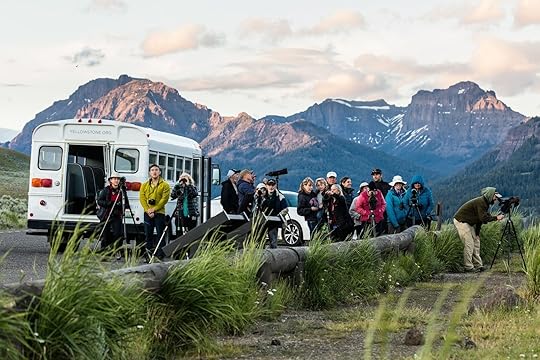
Visitors to national parks spend billions each year in local gateway towns. Photo: Yellowstone National Park/NPS/Jacob W. Frank
National parks are economic engines, generating billions of dollars annually through tourism. In 2023, they generated $26.4 billion in spending for communities within 60 miles of park boundaries. That meant 415,000 jobs, which means 415,000 additional people with money to spend on housing, groceries, and other businesses that keep communities healthy and thriving.
Despite these contributions, national parks operate on limited federal funding — approximately $2.5 billion annually. That makes them one of the most profitable parts of the government, all while keeping the cost to access parks extremely low.
Read our massive investigative story on what happened 30 years ago when wolves were released back into Yellowatone National Park. (They’ve now moved as far west as California).Travelers Dropped $26 Billion on US Parks in 2023. Here’s Where They Went.Read why the fact that national parks broke a visitation record in 2024 is going to be a huge problem in 2025Read about a down-and-out town that was completely revitalized thanks to outdoor recreationHere’s why we should have more national parks in Middle and Eastern AmericaThe outdoor recreation industry is huge — bigger than mining and agriculture, according to a reportHere’s why conserving land is more economical than exploiting it3. National parks provide essential habitats for vital species
Photo: Danita Delimont/Shutterstock
The ongoing success story of wildlife in US national parks is one of the best stories of conservation in the world. Parks provide crucial habitat for thousands of species, from from iconic mammals like bison, bears, and mountain lions to lesser-known amphibians, birds, and tiny insects. Many national parks are the last remaining safe habitats for threatened and endangered species that are struggling elsewhere due to habitat loss, pollution, and climate change.
National parks allow wildlife to thrive with minimal human interference, serving as migration corridors and breeding grounds while providing safe areas to hunt and raise young away from external threats. Parks also act as natural laboratories for scientists on topics from wildlife behavior to the impacts of climate change plants and animals. Equally important, parks foster public connections to wildlife to build awareness, empathy, and a sense of stewardship. Without national parks, many species would face uncontrolled threats from development, roads, and industry, leading to a massive loss in biodiversity, and major changes to the American landscape.
These people broke a rule to protect national park wildlife, and may get six months in jailA new study based on government data shows that the top US national parks for wildlife spotting are not where you’d expectFind out why a park flew mountain goats through the skyWatch this stunning video that shows how much wildlife thrived in Yosemite without tons of humans nearbyIt may seem obvious, but if you try to get too close to a bison, it’s going to react exactly how you expect it toIf you haven’t been to Denali, here are the amazing animals and landscapes you can expect to seeIt’s been 30 years since wolves were brought back to Yosemite — and Matador wanted to know if they’re worth the cost4. Hiking in US national parks is some of the best in the world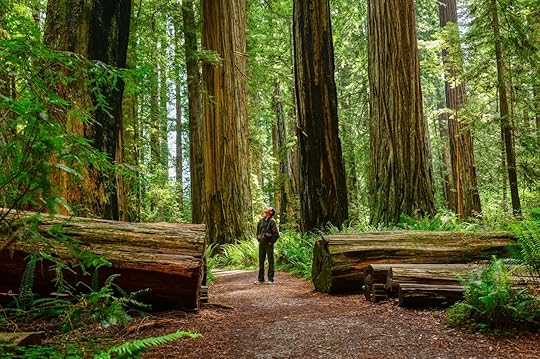
Photo: Janice Chen/Shutterstock
Hiking and walking are one of the most popular reasons people visit National Park Service sites. NPS sites have more than 21,000 miles of trails, ranging from gentle boardwalks to rugged, multi-day backcountry routes. Some of the most iconic hikes in the country are in national parks, such as the Mist Trail in Yosemite, the Appalachian sections of Great Smoky Mountains, and the high-alpine circuits of Rocky Mountain National Park. Even more bucket-list hikes, such as Mount Whitney in California, are protected as part of the US Forest Service (which is not part of the National Park Service). Trails in national parks are carefully maintained, routed in such a way so as to protect environmentally sensitive areas, and often both educational and accessible, offering ADA-compliant routes for wheelchair users and visitors with limited mobility.
Make your plans now to apply for one of the most competitive hiking permits in the countryRead up on America’s official scenic trails (not just the Appalachian Trail and PCT)Add one one of the 9 hardest hikes in the US National Park Service you can do in a day to your hiking bucket list Check out the gorgeous photos from one writer’s 5-day hiking trip through Yosemite and Half DomeIf you’re headed to Zion National Park, check out the 16 least-crowded trails for avoiding peopleIf you love the creepy side of park history, check out 8 haunted national park trails across the countryBlack Canyon of the Gunnison doesn’t get too crowded, but you can make it even more peaceful with these 9 crowd-free Black Canyon of the Gunnison hiking trails 5. National parks support vital, groundbreaking research and conservation
Photo: Glacier Bay National Park and Preserve/NPS/Sean Tevebaugh
National parks are ground zero for research and conservation projects, benefiting both the environment and humanity. Research in parks spans a wide range of fields, from wildlife monitoring to climate change analysis. Yellowstone’s reintroduction of gray wolves was a massive study in how apex predators are essential to balanced landscapes; the research from the park has influenced global conservation strategies. And an ongoing study in the Great Smoky Mountains on acid rain led to air pollution regulations that improved water quality for millions. The research can help humans who never even set foot in a park, through projects like pollinator studies and fire management studies in Kings Canyon National Park.
Here’s why an initiative to protect 30 percent of the Earth by 2030 could be massive for outdoor spaces in the USWe’re not sure if it’ll still happen, but a new EPA rule could make stargazing in some parks so much betterProtection for Colorado’s Dolores River Canyon is controversial. But here’s why that may make it more successful.If the underwater world ignites your passions, check out five things you can do in five minutes to help the world’s oceans Read about seven animal species barely saved from extinction thanks to conservation and land protection effortsLearn about five key women in conservation, some of whom helped America’s favorite national parks gain their protected statuses6. National Park Service sites have amazing campgrounds
Photo: Joshua Tree National Park/NPS/Hannah Schwalbe
Camping in US national parks is a way to immerse yourself in nature, ensuring you fall asleep and wake up inside park boundaries and skip the lines of cars trying to get in each morning. There are more than 130 campgrounds in US national parks, ranging from developed campgrounds with convenient camp stores to remote backcountry sites, plus plenty of parks where you can camp wherever you like in the backcountry.
Campground reservations at front-country sites can be hard ot get, with most parks opening online reservations six to three months in advance. However, there are some parks where you can usually get a last-minute spot, like New River Gorge National Park in West Virginia or Great Basin National Park in Nevada. And if you want a backcountry site at a US national park, you may have to enter a complicated lottery, or even rent a canoe and paddle to your site.
Camping in national parks is an affordable, convenient way for nearly anyone to go on an outdoorsy adventure, with tent sites usually just a few minutes from some of the most impressive natural wonders in the country.
Read Matador’s massive roundup of the best places around the country to pitch your tent where you’ll wake up to amazing viewsLearn how to use the NPS app to score last-minute reservations and permits West-coaster? These are the 10 prettiest places to camp in CA, OR, and WARead up on how to get a reservation at the 10 most popular national parks for tent camping These are the most in-demand national park campgrounds in the USIf you’re new to camping, read up on camping mistakes and eight things you should never do at a public campgroundUp for a big adventure? Check out how to plan the ultimate backpacking adventure through the Needles District of Canyonlands National Park7. The stargazing in national parks is unbeatable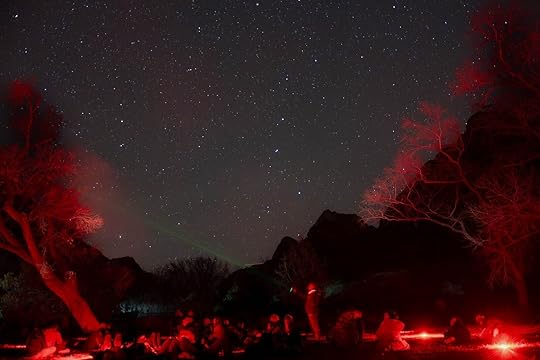
A group of people at a night sky program in Zion National Park, Utah. Photo: Zion National Park/NPS/Serena Wurmser
One of the most accessible activities in national parks is stargazing. For most Americans who live in cities and suburbs, national parks offer a rare opportunity to witness the cosmos in all its glory, far removed from urban light pollution. Many parks have earned designations as International Dark Sky Parks, indicating they have exceptional night sky viewing conditions. Death Valley National Park, for instance, is a Gold Tier Dark Sky Park, and Texas’ Big Bend National Park has the least light pollution of any park in the contiguous United States. According to the park, you can see up tp 2,000 stars on a clear night, compared to just a few hundred in urban areas.
Many national parks also have stargazing events, including ranger-led programs and astronomy festivals (and will likely have more during events like National Park Week 2025).
In California? Here’s why Joshua Tree is one of the best stargazing destinations in the USPlan a trip to one of the 11 best national parks for stargazing (including Joshua Tree)Here’s your cheat-sheet to the best night sky events to catch in 2025 Read why you may want to head to Mesa Verde National Park for unique stargazingIf you’re looking to get more into stargazing, you may want to attend the Joshua Tree Night Sky FestivalDid you know stargazing is even better in the winter? Here are the 8 best US national parks for stargazing in winterDid you know little-known Vermilion Cliffs is one of the best remote places to stargaze in the US?Hooray for Zion National Park, which became a Dark Sky Park in 20218. National park hotels are unique and historical
The interior of the Ahwahnee Hotel, Yosemite National Park. Photo: Suzie Dundas
Some of the Matador Network team’s favorite stays have been in hotels inside or just outside the boundaries of national parks. Many of these properties offer a distinct blend of history, architecture, and proximity to stunning natural landscapes, making them a special part of the park experience you won’t find in too many other settings.
Inside the parks, iconic lodges like Yellowstone’s Old Faithful Inn and Yosemite’s Ahwahnee Hotel stand as masterpieces of “parkitecture,” a rustic architectural style from the early 1900s almost exclusive to national parks in the US. The Old Faithful Inn, built in 1904, is one of the largest log cabins in the world, with a seven-story lobby and a massive stone fireplace. And staying at the Ahwahnee in Yosemite is like stepping back into the elegance of the 1940s.
But not all national park hotels have to be wildly expensive. While Glacier National Park is home to the beautiful lakefront Many Glacier Hotel, it’s also home to the Swiftcurrent Motor Inn, with more of a “roadside motel from the 1950s” vibe.
Just outside park entrances are some pretty appealing hotels, too, whether you want extreme luxury, or just a budget-friendly place to crash after a long day of hiking.
The tiny town of Wrangell, Alaska, may be the quirkiest gateway town within NPSDaydream about planning a trip to a brand-new domed glamping hotel near Bryce CanyonWe rounded up 7 national park hotels everyone should stay in at least one timeIf you already know which park you want to visit, check out the best hotels near Yellowstone National Park, Bryce Canyon National Park, Rocky Mountain National Park, Arches National Park, Joshua Tree National Park, Glacier National Park, Zion National Park, Great Smoky Mountains National Park, Death Valley National Park, and Acadia National Park (whew!)Read how Marriott Bonvoy made it easier for members to book hotels near US national parksRead about the historic Wawona Hotel in Yosemite, now closed indefinitelyDream about staying at the pretty Rush Creek Lodge, just steps from Yosemite’s entranceOr check out the more affordable (and super-trendy) El Capitan Hotel near Yosemite9. Some of the country’s best glamping is near national parks
Photo: ShineGraphics/Shutterstock
Glamping near national parks has surged in popularity, probably because it offers an appealing balance of outdoor adventure and luxe comforts. The increased interest in glamping has led to a wide variety of unique and boutique hotels, from off-the-grid eco-domes to safari tents to opportunities to sleep in a vintage Conestoga wagon. Glamping is a bit more connected to nature than staying in a hotel, and many glamping hotels include activities to help travelers play outside, like yoga classes and group bonfires in the evenings. Travelers can choose from well-known brands like Under Canvas and Autocamp, or use Airbnb to rent one-of-a-kind glamping options in towns just minutes from park gates. And if cabins are your thing, well, is there anything more perfect for a national park vacation than renting your own private cabin in the wilderness? We don’t think so. Read about the dreamy new luxury glamping resort opening near Acadia National ParkNot sure where you want to go? These are five of the coolest new glamping resorts to book this yearSpoiler: the Grand Canyon has some of the coolest glamping resorts around If cabins are your vibe, check out the best cabins near Zion National Park, Great Smoky Mountains National Park, Yosemite National Park, and Rocky Mountain National Park.For a unique stay, you may want to head to this new geodesic dome resort super close to the Grand CanyonIf you love the AutoCamp brand, you’ll be pleased to learn it just opened two more at extremely in-demand outdoor locations10. National Parks are affordable, classic family vacations
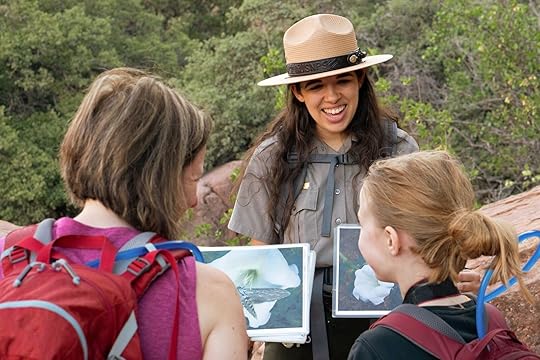
Photo: Zion National Park/NPS/Hazel Harris
US national parks can be some of the best family vacations in the country. For the price of a single entry fee (or free, if you have a 4th grader in the family), you can spend all day exploring dramatic landscapes, taking advantage of free ranger programs and family events, and making s’mores at an outdoor campfire. Campsites are often just $15–30 per night, and many parks have junior ranger programs, ranger-led activities, and accessible hiking trails designed for all ages and skill levels.
Instead of spending hundreds on amusement park tickets or flights, families can pack a cooler, load up the car, and spend a week stargazing in Zion or hiking in Shenandoah. And no matter what your child is interested in, be it tidepools, fossil beds, waterfalls, or even dinosaurs, you’ll probably be able to find it at a national park site.
Beat the California crowds and spend the perfect family weekend at Sequoia National ParkIf you have a 4th grader in the family, here’s how they can get a free National Park Passfor the whole familyRead on how to take a first backpacking trip with kids where they (and you) will actually have funLittle-touristed South Dakota is one of the best states in the country for a family road trip. Here’s why. We know pets are family, too, so here are 10 national parks You can explore with your dog. Read up on 7 family travel resolutions that will make your trips more fun this year11. The outdoor recreation opportunities in US national parks are world-class
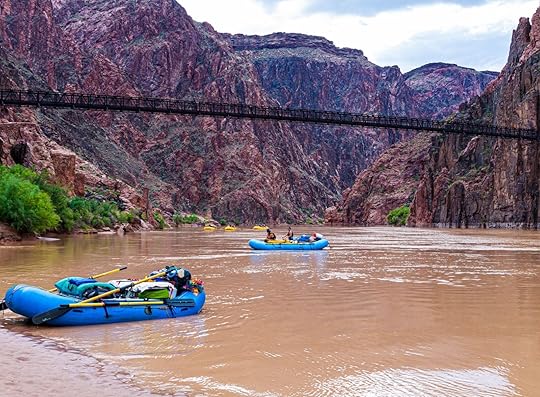
Rafting in Grand Canyon National Park. Photo: Billy McDOnald/Shutterstock
While hiking is often the headline act, US national parks have way more to do than just hitting the trails. From paddling to backcountry skiing, national parks are made to accommodate as many outdoor pursuits as possible. Climbers flock to the granite domes of Yosemite Valley, cyclists ride the rim of Crater Lake in Oregon (or, if you time it right, famous Going-to-the-Sun Road in Glacier), and kayakers and paddleboarders are common sights on alpine lakes. You can even scuba dive and snorkel in many national parks. National parks are generally safe places to try new activities, and often, parks have their own organizations and classes that offer lessons within park boundaries, like California’s Yosemite Mountain School.
This little-visited national park is one of the most epic in the world if you’re a scuba diverWest Glacier, just outside Glacier National Park, is a fly-fishing dream. Here’s why. Read about all the adventures available in Kenai Fjords National Park, including epic paddling and boatingIf you’re a backcountry skier, here are the parks with the sickest winter linesWe were thrilled when New River Gorge became a national park as it’s home to absolutely fantastic rock climbingThese are the best national parks for whitewater rafting, whether you’re a pro or first-timerHave you skied in this historic, cute-as-can-be ski resort inside Yosemite National Park?Read up on why Death Valley National Park as some of the most extreme road cycling in the countryEarly risers know parks like Rocky Mountain National Park are best before 9 AM. Here’s why. 12. Some of the coolest Airbnbs in the country are near national parks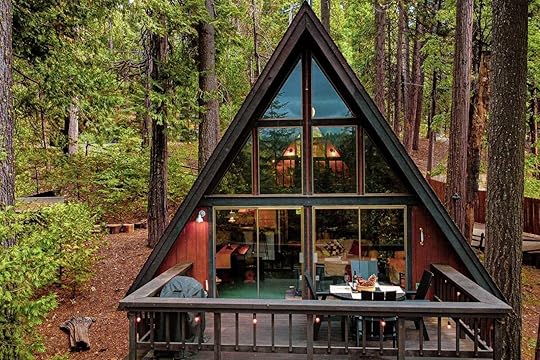
Photo: Airbnb
Airbnbs near national parks tend to offer something that typical vacation rentals can’t: proximity to some of the most spectacular scenery in the country. That could be in the form of a glass-walled cabin near Zion, a solar-powered tiny home just outside Joshua Tree, or a beloved family cabin in the shadow of the Smokeys. Many are run by locals who know the best trails, viewpoints, and hidden spots nearby, and having a full kitchen can help you save big on bringing your own snacks and picnic lunches. Some rentals even come with extras you can use to enhance your getaway, like backpacks and hiking gear, telescopes, or even kayaks and paddleboards. We love national park Airbnbs for their perfect blend of nature, comfort, and space for the whole gang.
The Best Airbnbs Near Pinnacles National ParkThe Best Airbnbs Near Yellowstone National ParkThe Best Airbnbs in Estes Park, ColoradoThe Best Airbnbs Near Olympic National ParkThe Best Airbnbs Near Death Valley National ParkThe Best Airbnbs Near Shenandoah National ParkThe Best Airbnbs Near Bryce Canyon National ParkThe Best Airbnbs Near Arches National ParkThe Best Airbnbs Near White Sands National ParkThe Best Airbnbs Near Big Bend National ParkThe Best Airbnbs Near Grand Teton National ParkThe Best Airbnbs Near Yosemite National ParkThe Best Airbnbs Near the Grand Canyon11 Magical Airbnbs Near the Redwoods and Sequoia National ParksThe Best Airbnbs Near Saguaro National ParkThe Coolest Cabins You Can Rent in Great Smoky Mountains National Park
How Coachella Turned a Quiet Valley Into a Global Cultural Hub

Considering its larger-than-life presence on social media, it’s hard to believe that the Coachella Valley Music and Arts Festival began with a modest 25,000 attendees and $50 ticket prices. Helmed by Southern California-based concert and music festival promoter Goldenvoice, the festival was co-founded by Paul Tollett and Rick Van Santen in 1999. In that fledgling first year, alternative music fans descended upon the pristine Empire Polo Club to watch acts that included Beck and Rage Against the Machine.
Since then, the music festival has expanded into a six-day festival spread over two weekends, each driven by brand activations, fashion trends, and culinary creations from some of the country’s best chefs. Now, more than 100,000 people swarm the desert every April, decked out in western wear, glow-in-the dark bodices, crop tops, sportswear, and ubiquitous flower crowns. It’s a festival to see and be seen, where coveted passes grant access to performances by artists like Beyoncé, Madonna, Daft Punk, and the late Prince.
View this post on Instagram
A post shared by Bey_heart (@bey_heart)
Just as impressive as some of its musical acts over the years is Coachella’s stellar food and beverage lineup; it’s made the Valley a culinary destination in its own right. In 2025, more than 75 bars and restaurants will claim their spots on grassy knolls and behind teeming garden walls. Tijuana-style tacos by Tacos 1986, burgers from Michelin-starred Camphor, Szechuan garlic noodles from Bang Bang Noodles, and birria from pop-up concept The Goat Mafia will all be served next to hidden speakeasies from Mixteca (and the team behind New York City’s PDT), among other hip, exclusive pop-up venues. Outstanding In The Field, Jim Denevan’s coveted family-style, farm-to-table culinary experience, will make its tenth appearance at the festival in the idyllic VIP Rose Garden.
View this post on Instagram
A post shared by Coachella (@coachella)
Indeed, Coachella’s grown into a fool-proof formula, guaranteed to create buzzing performances and experiences that make for good headlines. As the festival nears its 25th anniversary, the impact it’s had on the region has been massive. “When Coachella launched in 1999, it was seen as an ambitious experiment. Now, it’s a cultural institution that brings hundreds of thousands of visitors to the desert each year,” says Adrian Garcia, Food & Beverage beverage director for Goldenvoice Festivals. He says that beyond the festival’s immediate economic boost to towns, hotels, and restaurants, the festival’s culinary and cultural offerings have had a long-term impact on the region’s visibility. “It’s helped reshape how people think about the Coachella Valley, not just as a seasonal escape, but as a year-round destination for art, food, and global culture,” he adds.
Located about two hours from Los Angeles via car, the Coachella Valley includes Coachella, Palm Springs, Palm Desert, and Indio, where the festival takes place. As a California native, I grew up making the drive there on the I-10 long before the concert series was a thing. Years later, I’m still amazed by how much the festival has become part of the region’s identity and sparked a rise in tourism in ways that no SoCal native could have predicted.
View this post on Instagram
A post shared by Canopy Wine Lounge (@canopywinelounge)
At the end of 2024, United Airlines launched nonstop service from Washington, DC’s Dulles International Airport to Palm Springs International Airport. Semi-private jet company JSX added limited flights from Hollywood Burbank Airport near LA to Jacqueline Cochran Regional Airport, about 20 minutes from Indio. Last year, the highly anticipated Thompson Palm Springs by Hyatt opened with 168 bungalow-style accommodations on a covered corner downtown, and a slew of gorgeous boutique hotels with quintessential desert design have also gotten shiny new exteriors, including The Cactai and Terra Palm Springs. Newly opened wine bars showcasing varietals from around the world include Perry’s Fine Wines & Liquor, and chef Kristin Puttkamer’s Canopy Wine Lounge (two of my favorites). On the weekends, the Valley’s legacy as a welcoming LGBTQIA+ destination shines at Reforma’s always-entertaining drag brunch, hosted by Epiphany Kali.
But the influx of hip and trendy city eateries hasn’t replaced the region’s food scene – it’s added to it. In Coachella, about a 10-minute drive from the festival grounds, multi-generational Mexican American culture remains rooted and strong on ancient Native American territory. Sixth Street Coffee serves up an award-winning horchata, and Daniel Mata’s vintage finds at his store Return of the Goods is a great place to source your concert outfits while supporting a local business. Vibrant murals of Chicano history unfurl on city blocks and have inspired a self-guided walking tour produced by artist Armando Lerma and curator Medvin Sobio.
Businesses like these should give visitors more than enough reason to travel to the Valley for reasons other than just the music. Sure, the festival may have driven an uptick in tourism, but it’s the community that’s always existed that makes the place special. And it’s the regional community that helped build Coachella, as the festival started with humble roots and local businesses. Now, the festival can help amplify those local businesses and offerings to a global audience.
“The influence of Coachella extends far beyond the festival grounds,” says Garcia.” It’s become a cultural touchstone that draws global attention to the Coachella Valley each year. The relationships we’ve built with local partners, artists, and small businesses over the years are what make the festival what it is.” 
April 17, 2025
Savor Charlotte Is One of North Carolina’s Tastiest Fests (and a North Star for Dining Anytime)

The visitor slogan for Charlotte, North Carolina – “Charlotte’s Got A Lot” – sets up some high expectations. As a regular visitor to Queen City, I promise you the slogan falls short. Charlotte’s got it all. (Okay, so maybe it doesn’t have everything, but it’s so close you’ll never know the difference.)
I left my home on North Carolina’s coast to spend a tasty weekend experiencing the opening salvo of Savor Charlotte, a two-week food festival held in mid-March that’s loaded with interactive classes, exclusive menus, and Savor-exclusive offers. In a state where restaurant weeks, culinary festivals, and food experiences fill the calendar year-round, it’s hard to stand out — but Savor does.
If you’re a food fan, follow in my footsteps for the next Savor, or take note of what’s worth eating and drinking for your next trip to Charlotte.
A taste of Savor CharlotteTuscan wine tasting at Supperland
Photo: Jason Frye
My Savor experience kicked off with an Italian wine tasting at Supperland — part steakhouse, part Sunday supper. The tasting focused on wines from Tuscany, with eight pours of vernaccia, chianti, Brunello, and an assortment of Super Tuscans (unconventional red blends) telling the story of Tuscany’s terroir and wine history.
Many Italian wines feature on Supperland’s menu, and the light bites the restaurant served during the tasting showed the kitchen’s attention to creating a super food and wine experience from first sip to last bite. While the tasting was a Savor event, Supperland holds events — wine, whiskey, and cocktail tastings; cocktail classes; oyster tastings; and more — on the regular.
Supperland: 1212 The Plaza, Charlotte, NC 28205
Cheese and beer pairing at Petty Thieves BrewingPetty Thieves Brewing, between Uptown and Charlotte’s North End, did a bold thing for Savor: paired beer and cheese for an intriguing afternoon. We started with a tasting tutorial — which, it turns out, is pretty similar to a wine tasting: swirl, sniff, sip, repeat (well, you don’t sip the cheese, you nibble it). The pairings were revelatory. Taleggio, the smelliest cheese we tried, and the saison revealed the sweetness inherent in each and played up the funky notes of both beer and cheese. Likewise, the triple crème brie and silky-smooth nitro Irish stout were a beautiful coupling.
On a normal day, Petty Thieves is cheese-free — although you can bring your own in — but our tasting guide said she’s developing a calendar of similar cheese-and-beer tastings (and more) in the coming months.
Petty Thieves Brewing: 413 Dalton Ave Suite B, Charlotte, NC 28206
Pitmasters boot camp at Sweet Lew’s BBQ
Photos: Jason Frye
Chef and Pitmaster Lewis Donald — the Lew of Sweet Lew’s — has a reputation for greatness and devotion to true ‘cue (slow-cooked over wood coals, simply seasoned, and simply delicious) that shows at both his restaurant and his early-April Carolina BBQ Festival. For the class I attended, Lew brought in fellow pitmaster Bryan Furman to cover everything you need to master your smoker: butchery and prep work, temperature and cook time, fire building, rubs and brines, and how a restaurant like his transforms beautiful proteins into stunning barbecue.
The group learned tips for handling brisket; surviving the dreaded “stall” when the internal temperature of barbecue meat stops rising; and improving our ribs, chicken, and pork butts. More valuable takeaways came when Lew demonstrated how to turn brisket and rib trimmings into sausage, showed us his method for seasoning and cooking ribs, and led real conversations about cooking on our home smoker setups.
The class also had an interactive element. Lew handed us knives to practice spatchcocking chicken and let us season a few and toss them on the smoker. It ended with a belly-busting feast that showed off Lew’s all-star sides and meats.
Sweet Lew’s BBQ: 923 Belmont Ave, Charlotte, NC 28205
Whiskey tasting at Muddy River DistilleryMount Holly, a Charlotte suburb northwest of the city, holds onto its mill-town heritage at Muddy River Distillery. Housed in a century-old mill, it now produces a fine lineup of spirits, and the distillery invites visitors to join its Saturday-only tour and tasting. This takes you behind the scenes (well, not exactly behind the scenes because you can see the stills from the bar and dining room) for a look at the distilling process from first run to barrel aging.
Best of all, it concludes with a tasting of Muddy River’s rum from the pure silver spirit to the barrel-aged offerings, as well as flavored versions (spiced, basil-infused, coconut-flavored, and coffee-laced). The restaurant also serves a handful of sharable bites and has live music weekly.
Muddy River Distillery: 250 N Main St, Mt Holly, NC 28120
Where to eat and drink in CharlotteL’Ostrica
Photos: Jason Frye
L’Ostrica brings wide-ranging influences and an insatiable culinary curiosity to exceptional results with a multi-course tasting menu that’s, simply put, a transformative meal — a perfect oyster with sunchoke and black truffle; smoked trout with a seafood fumee, smoked roe, and potato; rabbit agnolotti, squab two ways, lamb with cumin-scented carrot emulsion; a simple dish of English peas, periwinkles and a bit of briny foam. What should you order? The larger of the tasting menus. My only regret after this meal was that I opted for the short version.
L’Ostrica: 4701 Park Rd D, Charlotte, NC 28209
Mazi
Photos: Jason Frye
Mazi (Greek for “together”) dishes up Mediterranean-inspired small plates and fantastic cocktails and mocktails in a space that saw every table full of happy, hungry, laughing folks when I was there. Among the must-orders are the black walnut muhammara, Carolina Gold (rice) Falafel-Cini with a piquant green zhug sauce, lion’s mane mushroom shawarma wrapped in collard greens, and cast iron prawns with Calabrian chile and roasted garlic. For dessert, order it all: the tahini mousse, baklava sundae, and cornmeal ricotta cake looked and tasted great.
Mazi: 1300 South Blvd #101F, Charlotte, NC 28203
Dogwood Southern Table and BarView this post on InstagramA post shared by Dogwood: A Southern Table (@dogwoodclt)
Dogwood, a Charlotte hotspot for several years, relocated to Uptown’s Westin Charlotte to much fanfare from longtime loyal diners and Westin guests who pack the place (know this before you order: portions are hearty). The duck and dumplings (with ricotta gnudi and duck confit) is a must-try, and the shrimp and grits (a Southern classic) with an incredible stewed tomato gravy is one of the best iterations of the dish you’ll try. For dessert, the carrot cake can’t be beat. The menu has so much more – steaks; a burger that looked so good I almost ate a second dinner; and fried, raw, and charbroiled oysters – you’ll need to stop by for lunch and dinner.
Dogwood Southern Table and Bar: 601 S College St, Charlotte, NC 28202
Folia
Photos: Jason Frye
Mixology mastermind Bob Peters and his team shake, stir, and serve superb cocktails from their semi-secret cocktail lounge. The front looks like a cute but tiny plant shop — until a secret door opens to reveal the bar and lounge-like spaces for chatting, sipping, and supping on small plates. The cocktail menu is split into “Perennials” (classics) and “Annuals” (seasonal libations). While you sip, nosh on bites like a baguette with butter or caviar (or both!), nduja or butternut squash flatbread, or a shrimp cocktail — and bring friends to truly soak up the ambience.
Folia: 1440 S Tryon St # 102, Charlotte, NC 28203
Chief’s Modern Cocktail Parlor
Photo: Jason Frye
Named in honor of Bob Peters’ dad, Chief’s Modern Cocktail Parlor lives up to the name with inviting and cozy spaces inside and an outdoor area that feels like the best version of a backyard that you can imagine. The menu is divided into craft cocktails, classics, spirt-free options, beer, wine, and snacks. I was feeling a little cheeky and went with a milk-and-cookies theme to my cocktails, ordering a pair of warm chocolate chip cookies to munch on while I sipped my Clarified Malted Milk Punch. The Only Fans (of Cheerwine) is a two-person drink I wish I could’ve ordered, but the classic Sazerac quickly made me forget I was there solo.
Chief’s Modern Cocktail Parlor: 3024 N Davidson St, Charlotte, NC 28205
Camp North EndView this post on InstagramA post shared by Camp North End (@campnorthend)
Camp North End is one of Charlotte’s huge adaptive-reuse projects that sees former industrial sites (like mills and factories) transformed into a hip dining-shopping-working-living space. Here, you’ll find more than a dozen spots to eat and drink (from fine Gullah- and Southern-inspired meals at Leah & Louise to tacos from La Caseta to pizza and ice cream).
You’ll also find boutiques filled with thrifted goods, streetwear, art, and plants, plus indoor and outdoor event spaces. On a previous visit, I dove into the immersive Van Gogh Experience, but on this trip, the play areas were full of families watching the kids frolic, and both Thrift Pony and That’s Novel Books were buzzing with activity.
Camp North End: 300 Camp Rd, Charlotte, NC 28206
Optimist HallView this post on InstagramA post shared by Optimist Hall (@optimisthallclt)
I stopped by Optimist Hall, Charlotte’s first food hall, to see what’s new. I left with a coffee, empanadas, and a couple of gifts in hand. Like Camp North End, Optimist Hall is one of those industrial-turned-commercial spaces — the former hosiery mill shows its workaday roots but in a space filled with tiny, delicious restaurants and a few boutiques.
At Archer Paper Goods, I grabbed a new notebook before wandering past tables packed with groups there for a bite and a good time. Indian street food from Botiwalla by Chai Pani graced some tables, while others were piled high with Harriet’s Hamburgers, Spanish-inspired small plates from Marina’s Tapas, barbecue from Noble Smoke, and sweet icy treats from Honeysuckle Gelato. Since Savor kept me fed, I wasn’t up for a full meal, but I was feeling snackish, so I paid a visit to Felix Empanadas for a pair of tasty handhelds and Suárez Bakery for a Cuban coffee.
Optimist Hall: 1115 N Brevard St, Charlotte, NC 28206
Where to stay in CharlotteThe Westin CharlotteView this post on InstagramA post shared by The Westin Charlotte (@westincharlotte)
Charlotte’s packed with places to stay, from B&Bs and inns in historic homes to luxury accommodations and modern hotels at a range of price points. You’ll find plenty of options in most neighborhoods, but I stayed Uptown at The Westin Charlotte in a great location that put several classic Charlotte attractions within an easy walk: among them the Bechtler Museum of Modern Art, Mint Museum Uptown, NASCAR Hall of Fame, and sporting venues including the Spectrum Center (where the Hornets play) and Bank of America Stadium (home of the Carolina Panthers and Charlotte FC).
At the hotel, my room was spacious and modern, with a luxe shower and bath products, a cozy robe, and a bed so comfortable I didn’t want to leave. The view — a sweeping 16th-floor look at west Charlotte — was a bonus. The Westin Charlotte is pet friendly ($50 fee per night), has a well-outfitted fitness center, and offers rooms and suites in single king and double queen configurations (though every room has a comfy couch, too).
EV chargers are available in the parking deck, but if you drive, remember the $35 per day fee for parking ($48 for valet). Westin Club members enjoy access to a tasty breakfast spread and hors d’oeuvres in the evening. On the first floor, there’s a little coffee shop with drinks and grab-and-go bites, but the hotel’s restaurant, Dogwood Southern Table, is the culinary star here.
The Westin Charlotte: 601 S College St, Charlotte, NC 28202
How to get to and around CharlotteGetting to Charlotte is a breeze. Interstate 77 flows north-south through the city; Interstate 40 runs east-west only 45 miles north of Charlotte; and cities like Winston-Salem and Greensboro, North Carolina, and Columbia, South Carolina, sit within an easy 90-minute drive. If you’re lucky enough to live near an Amtrak line, you can take The Crescent, Carolinian, or Piedmont trains into town. Or you can fly into Charlotte Douglas International Airport (CLT) on any number of major carriers. I drove, following US 74 west into the city, an easy morning-long drive.
Once you’re in town, Ubers and other rideshares will deliver you from your hotel to any number of walkable neighborhoods, or you can take the Lynx, the city’s light rail connecting Uptown (Charlotte’s Downtown) with several neighborhoods (rides are only $2.20 one way, or you can buy a day or weekly unlimited rides pass for $6.60 and $30.80, respectively). CATS, the Charlotte Area Transit System, also operates buses that are an easy way to get around. Of course you can drive, and despite the city’s size, Charlotte’s a pretty easy town for drivers though parking can be a chore (if you drive, leave early for your reservation).
Charlotte’s a walkable city if you plan ahead and keep your exploration focused on adjacent neighborhoods. Uptown sprawls across several blocks and includes sporting venues, museums, restaurants, and hotels. Food halls and complexes like Optimist Hall and Camp North End are foodie focal points in their neighborhoods. In NoDa (North of Davidson), you’ll find a bevy of breweries, restaurants, and hip shops. Plaza Midwood, SouthPark, and South End have even more dining, shopping, and accommodation options in neighborhoods where you can stick close to home base and still have a memorable weekend (or more) in Charlotte. 
Don’t Let the Gates Close: Take Action to Protect Our Public Lands
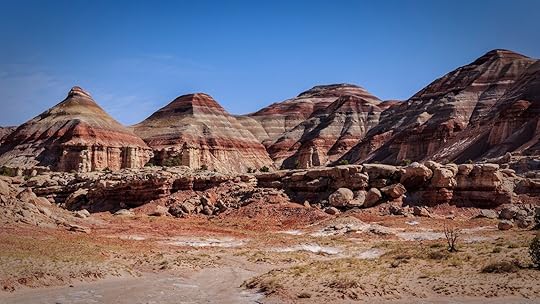
Every year in the United States, millions of travelers head to public lands seeking authentic experiences tied to a place’s culture and landscape. Federally managed public land covers nearly 30 percent of the country. These are our national parks, forests, canyons, and deserts that burst with so many colors and textures that it’s impossible to capture in a single postcard. Public lands protect sacred Indigenous sites, geological wonders, and unique ecosystems, and are destinations in our endless pursuit of adventure, happiness, and challenge.
It’s no wonder public lands have widespread support. More than 70 percent of residents across eight western states (96 percent of public lands are west of the Mississippi River) oppose the sale of public lands for energy development or any other use, according to a State of the Rockies poll by Colorado College — a record high in the 15 years of the survey. The support spans across political, economic, and ideological divides.
Yet the future of these lands is in question. The current Republican Party Platform calls for selling federal land for housing developments — though there are many unanswered questions about how this would help the affordable housing crisis, as well as a lack of specifics about where and how many homes will be built. On April 4, the Senate voted to allow the sale of public lands to reduce the federal deficit in the upcoming budget bill. It passed 51-48 largely along party lines, with just two Republicans, both senators from Montana, opposing the measure. This vote has heightened concerns that such sell-offs could be included in the final budget package, set to come to a vote later this year. Treating treasured outdoor spaces as disposable assets would establish a dangerous precedent, and would restrict access to areas popular with hikers, hunters, anglers, stargazers, campers, and more.
Public lands offer a place for shared experiences of awe and connection among locals and visitors alike. This is only possible because public lands are open to everyone, rather than being restricted to those who private land owners decide to allow. Privatizing public lands takes what is currently accessible by all and puts it in the hands of a few. American citizens collectively own and support public lands to steward them not just for the present, but for future generations and for the flora and fauna that depend on these habitats not found anywhere else in the world.
Now, perhaps more than ever, it’s important to voice support for protecting one of the most beautiful and unifying aspects of American culture and natural history. Our public lands – yours, and those of your ancestors and your children – need you now.
Using public land sales to balance the federal budget ignores not only issues around access and conservation, but also the economic impact of these existing spaces. Every year, about 14 million international visitors go to national park sites — about one-third of all travelers from outside the country. Millions more come to ski and otherwise recreate at resorts located on public lands. Travelers fuel local economies around public lands by staying in towns near parks, eating at local diners, booking guides, buying gear, and more. Government studies have found that every $1 of national park funding generates $10 in economic activity. The Bureau of Land Management added more than $250 billion in economic output in 2023, which supported nearly 1 million jobs. Keeping public lands out of private hands supports sustainable, community-driven economic development over exclusive resorts and resource extraction.
If you’re like Matador Network’s editorial team, you crave open spaces, scenic trails, quiet forests, and wild beaches when you travel. In the US, these are all places you can find without needing special permission or paying hefty fees. Public lands are one of the few places left where people of all backgrounds can experience nature freely and equitably. If those lands were privatized, that freedom could eventually vanish or become prohibitively expensive.
How to take action to protect America’s public landsTaking action to protect public lands starts with making your voice heard. Email or call your representative. Outdoor Alliance put together this form that will automatically email a letter on your behalf to your state senators and elected member of the House of Representatives. Customize the form as you wish to highlight local lands or causes, or simply send the standardized form. Volume speaks, well, volumes here. The more that government leaders hear from their constituents about public land conservation, the more comfortable they will feel voting against a budget package that includes the sale of public lands.
Signed:
Tim Wenger, Transactional Content EditorAlex Bresler, EditorDebbie Gonzalez Canada, SEO EditorSuzie Dundas, Commissioning EditorNickolaus Hines, Managing EditorKatie Gavin, Lifestyle EditorRulo Luna, Photo EditorKelsey Wilking, Email Marketing Specialist9 Direct Flights From NYC for 2025, Starting at $165 Round-Trip
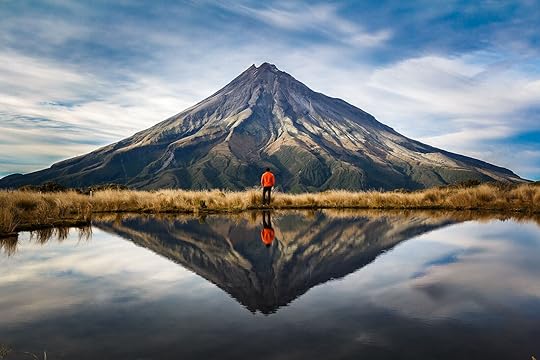
New York City may not be the center of the world, despite what many of its residents may think. But when it comes to international travel, it’s certainly an ideal place to be. New Yorkers have access to two large-scale international airports — John F. Kennedy and Newark Liberty — offering direct flights to destinations across six continents. (Antarctica, of course, remains a boating journey). And while LaGuardia is widely considered a domestic hub, it does offer direct flights from NYC to a few attractive destinations in the Caribbean and Canada.
All three airports are easily accessible via public transport and boast an array of lounges for frequent fliers, though, like everything else in New York, they have a tendency to get over-crowded. Fortunately, you can enroll in TSA PreCheck or register for Clear at NYC airports to avoid long security lines.
But before you worry about security lines, you have to book your flight, which means figuring out where to go next. Fortunately, there are plenty of direct flights from NYC to international destinations starting at surprisingly low prices.
These are the nine best international flights from New York City to help you plan your next adventure, listed in order of price by airport.
We hope you find an epic flight deal! Just so you know, Matador may collect a small commission from the links on this page. Listed prices are accurate as of the time of publication.
Direct Flights from John F. Kennedy International Airport (JFK)
John F. Kennedy International Airport (JFK) is the go-to airport for international travel for New Yorkers. It’s the sixth largest airport in the United States, serving 190 destinations, 78 countries, and 72 airlines. Because of the volume of flights, rates tend to be cheaper than in Newark, and there are more options for direct flights.
JFK is also the easiest to access via public transit, with a stop on the E train in Long Island, so you don’t have to pay for an expensive airport shuttle. You’ll want to arrive quite early, however, as it’s the busiest airport in the state.
Flights to Portugal from NYC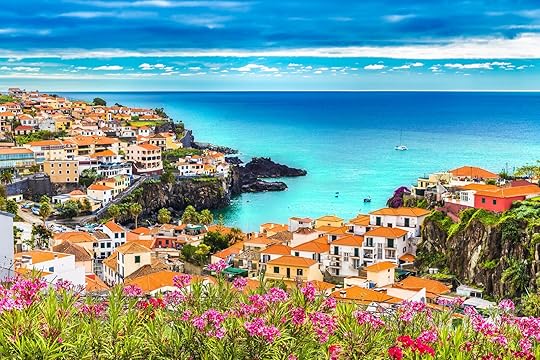 Photo: Serenity-H/Shutterstock
Photo: Serenity-H/Shutterstock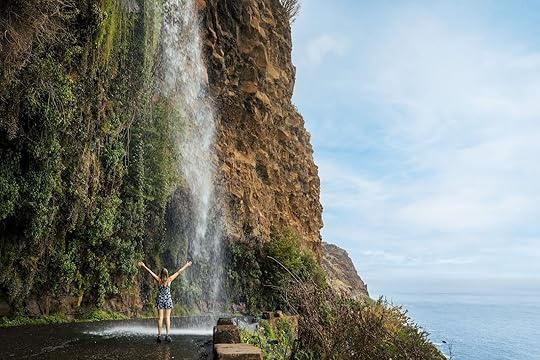 Photo: Ronstock/Shutterstock
Photo: Ronstock/Shutterstock 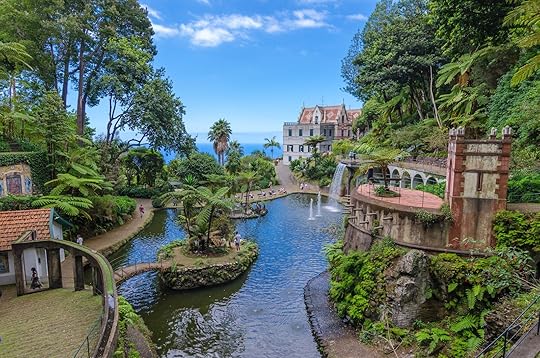 Photo: A_Mikhail/Shutterstock
Photo: A_Mikhail/Shutterstock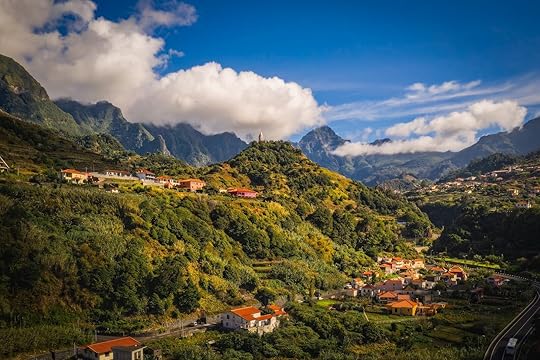 Photo: Sergiy Vovk/Shutterstock Flight time: 6 hours, 15 minutesAirlines: Azores, Tap AirLowest round-trip price in 2025: $361 (May) via SkyscannerWhere to stay: This Bright Pink Hotel on a Tropical European Island Is a Literal Dream Getaway
Photo: Sergiy Vovk/Shutterstock Flight time: 6 hours, 15 minutesAirlines: Azores, Tap AirLowest round-trip price in 2025: $361 (May) via SkyscannerWhere to stay: This Bright Pink Hotel on a Tropical European Island Is a Literal Dream GetawayThe best deals on flights from NYC to Portugal typically fly into Lisbon or Porto. Non-stop flights from JFK to Madeira, Portugal, launched in 2022 and offer travelers quick and easy access to the idyllic European destination. Madeira and Porto Santo are the two main inhabited islands in the Madeira Islands, a small Portuguese island chain off the western coast of Africa, roughly 350 miles from Morocco. The tropical European island has long been a well-kept secret amongst frequent fliers, renowned for its mountainous coastline, volcanic lava pools, and picturesque vineyards that provide plenty to do.
The new flight path is a sign that the island is increasingly becoming popular on a global stage, and, thanks to its positioning in the North Atlantic, it’s one of the best direct flights from NYC for a long weekend trip (though you may want to stay along its shores for far longer than that). The best months to visit are August and September, when the weather is warmest, though there’s no bad time to visit this Portuguese oasis — the subtropical climate guarantees 12 months of sunshine.
Once you arrive, lounging at the beach is certainly an option, but you’ll find plenty of adventure activities ranging from waterfall-jumping tours to wine-tasting tours in an open-air Jeep. And the hiking is also world-class, with an extremely well-marked system of coastal and inland trails. Oh, and don’t forget to take a wild basket ride while you’re there, too.
Read more about Madeira, PortugalEurope’s First Digital Nomad Village Is Opening in PortugalHeaded To Europe? Here’s Why You Should Add Madeira To Your Trip.13 Images That Prove Renting a Motorbike in Madeira, Portugal Is a Magical ExperienceFlights to Iceland from NYC
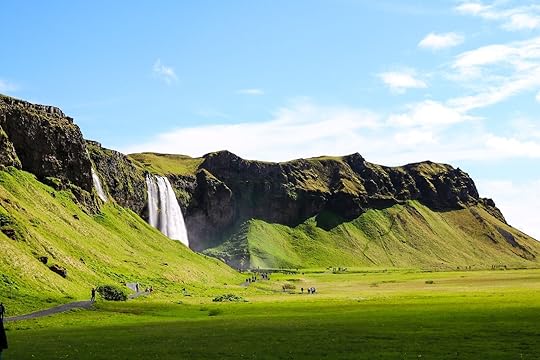 Photo: tracym_41 /Shutterstock
Photo: tracym_41 /Shutterstock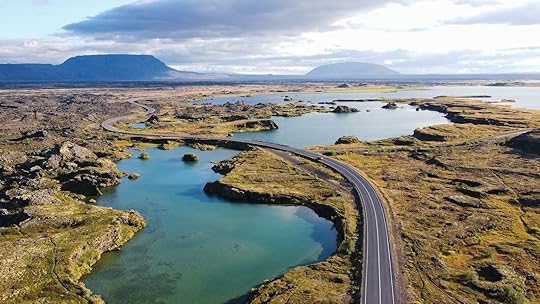 Photo: 2intour /Shutterstock
Photo: 2intour /Shutterstock Photo: Piotr Krzeslak /Shutterstock
Photo: Piotr Krzeslak /Shutterstock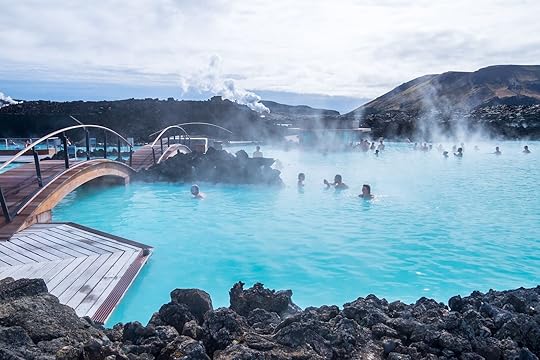 Photo: Puripat Lertpunyaroj /ShutterstockFlight time: 5 hours, 45 minutesAirlines: Kenya AirwaysLowest round-trip price in 2025: $359 via SkyscannerWhere to stay: Sleep and Dine With Giraffes at This Giraffe Hotel in Kenya
Photo: Puripat Lertpunyaroj /ShutterstockFlight time: 5 hours, 45 minutesAirlines: Kenya AirwaysLowest round-trip price in 2025: $359 via SkyscannerWhere to stay: Sleep and Dine With Giraffes at This Giraffe Hotel in KenyaIceland is all the rage right now — and this summer is the perfect time to find out why. Flights from NYC to Iceland are cheap and quick, and you can be at the Blue Lagoon within an hour of landing. The country is known for hiking, fjords, and small towns that feel a world away from the hustle of Manhattan or Brooklyn, even though the flight is under six hours long.
The best way to see a lot of Iceland in a short time is to book a private tour. These can be catered to interests like outdoor adventure, food and drink, or wellness (and it’s easy to combine all three into one epic trip). The country features some of the best Airbnbs anywhere, including remote cabins and stargazing bubbles. Of course, there are the northern lights . It’s also possible to hop a cruise around the island and see the natural sights from the water.
You’ll fly into Keflavik, which is under an hour from Reykjavik, the capital. The Blue Lagoon is between the two, and if you land early in the morning, head straight there to beat the crowds that show up in the afternoon.
Read more about IcelandA Trip to Iceland’s Vestrahorn Is an Otherworldly ExperienceHow to Walk Behind and Around Iceland’s Incredible Seljalandsfoss WaterfallIceland’s Reykjadalur Might Just Be the Most Beautiful Natural Hot SpringIceland’s New Westfjords Way Is a Wild, Empty Alternative to the Ring Road8 Museums in Reykjavík for Huge Whales, Northern Lights, and Lots of PenisesFlights to New Zealand from NYC
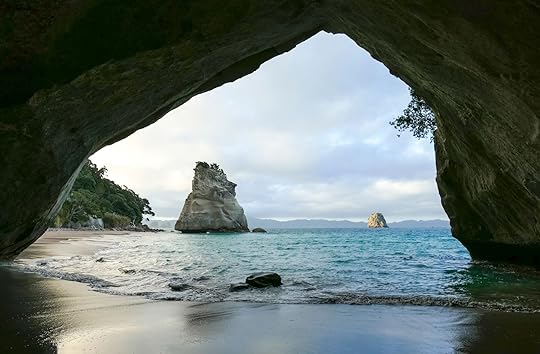 Photo: PRILL/Shutterstock
Photo: PRILL/Shutterstock Photo: Rudy Balasko/Shutterstock
Photo: Rudy Balasko/Shutterstock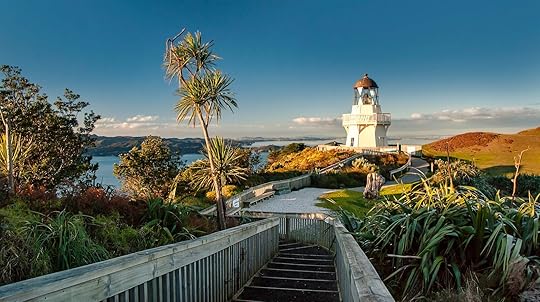 Photo: Hot Pixels Photography/Shuttertsock
Photo: Hot Pixels Photography/Shuttertsock Photo: gregorioa/ShutterstockFlight time: 17 hours, 30 minutesAirlines: Air New Zealand, Qantas, AmericanLowest round-trip price in 2025: $1,071 via SkyscannerWhere to stay: The 6 Best Luxury Resorts in New Zealand
Photo: gregorioa/ShutterstockFlight time: 17 hours, 30 minutesAirlines: Air New Zealand, Qantas, AmericanLowest round-trip price in 2025: $1,071 via SkyscannerWhere to stay: The 6 Best Luxury Resorts in New Zealand Air New Zealand launched the first direct flight between JFK and Auckland in September 2022, eliminating the need for New York travelers to stop in Texas or California en route to the gorgeous South Pacific nation. Sure, 17 hours is a long flight, but it’s a comparatively minimal price to pay for getting to visit. New Zealand is a destination truly worth circling the globe to visit.
Home to dramatic fjords, pristine glaciers, and endless undulating hillsides, New Zealand is famous for its otherworldly nature — hence its nickname of “The Real Middle Earth.” But the culture and cuisine of the Oceania island are also not to be overlooked, and Auckland is the perfect starting point for a trip through NZ.
Thrill-seekers can opt for the Skywalk along New Zealand’s tallest skyscraper for a view of the city, while beach lovers should head west to the coast to enjoy the spectacular sunset at Piha Beach. New Zealand’s world-renowned vineyards are along the eastern coast, while lush rainforests abound in the sup-tropical North Island of New Zealand. Unlike some other direct flights from NYC on this list, there’s not much point in going for just a few days. Budget at least two weeks at a minimum to get a feel for the country.
Read more about New Zealand:20 Years Later, Here’s How ‘The Lord of the Rings’ Has Changed New ZealandWhy Raglan Is New Zealand’s Coolest Tiny Surf TownThe Meaning Behind the Haka, New Zealand’s Mesmerizing Maori DanceDirect Flights from Newark Liberty International Airport (EWR)
Newark Liberty International Airport (EWR) is another portal for New Yorkers to the world beyond. It’s a smaller (and often less crowded) hub for travelers, with only three terminals compared to JFK’s six. As a result, there are fewer options for direct flights, though EWR still connects travelers to 183 destinations in 57 countries.
While JFK is easiest to reach on the subway, EWR’s location in Newark is more convenient for travelers leaving from the west side of Manhattan as the AirTrain connects EWR to Penn Station in about 25 minutes.
Flights to Peru from NYC Photo: badahos/Shutterstock
Photo: badahos/Shutterstock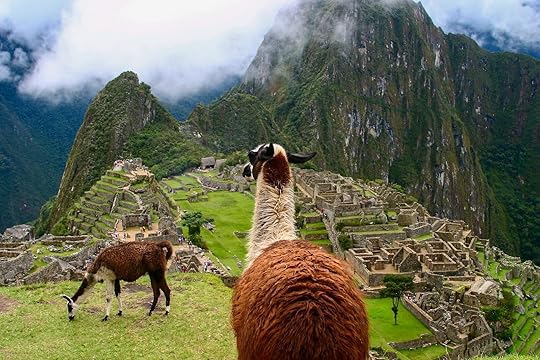 Photo: Macab52/Shutterstock
Photo: Macab52/Shutterstock Photo: Jess Kraft/Shutterstock
Photo: Jess Kraft/Shutterstock Photo: Ksenia Ragozina/ShutterstockFlight time: 8 hoursAirlines: UnitedLowest round-trip price in 2025: $468 via SkyscannerWhere to stay: Hotels Near Machu Picchu Perfect for Post-Trek Relaxation
Photo: Ksenia Ragozina/ShutterstockFlight time: 8 hoursAirlines: UnitedLowest round-trip price in 2025: $468 via SkyscannerWhere to stay: Hotels Near Machu Picchu Perfect for Post-Trek Relaxation Fly south to the Peruvian capital of Lima with United’s direct flight from EWR. While many travelers are already aware of the charms of South American capitals such as Bogota or Buenos Aires, this cosmopolitan destination along the Pacific Ocean remains wildly underrated. And flights are quite the steal, often under $500 round-trip.
While many visitors view Lima as a stopover to Cusco and Machu Picchu, the city holds a charm all its own. Avid surfers from all over the globe flock to Lima’s beaches as the Peruvian city is among the most underrated surfing destinations in the world (and one of the birthplaces of the sport). Travelers can spend a day on the beach and an evening visiting the bars and restaurants of the popular Miraflores District, home to some of the city’s best nightlife. The Larco Museum has fascinating exhibits on the nation’s pre-Columbian history, and you’ll definitely want to take a walking tour of the innovative street art and galleries in the neighboring district of Barranco.
Read more about LimaWhat It’s Like To Eat Guinea Pig in Peru for the First TimeThis Hostel In Lima Is The Perfect Basecamp To Explore The CitySleep Like a Condor in Peru’s Only Cliff-Hanging Capsule HotelGo Here, Not There: Choquequirao Is as Epic as Machu Picchu (but Without the Crowds)Flights from NYC to Paris
 Photo: Catarina Belova/Shutterstock
Photo: Catarina Belova/Shutterstock Photo: Gorodisskij/Shutterstock
Photo: Gorodisskij/Shutterstock Photo: SosnaRadosna/Shutterstock
Photo: SosnaRadosna/Shutterstock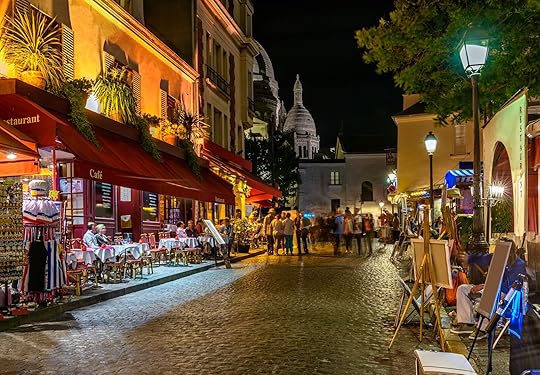 Photo: Catarina Belova/ShutterstockFlight time: 7 hours, 10 minutesAirlines: Air France, Delta, United, La Compagnie, French Bee, Air CaraibesLowest round-trip price in 2025: $373 via SkyscannerWhere to stay: The 9 Most Exciting Boutique Hotels in Paris
Photo: Catarina Belova/ShutterstockFlight time: 7 hours, 10 minutesAirlines: Air France, Delta, United, La Compagnie, French Bee, Air CaraibesLowest round-trip price in 2025: $373 via SkyscannerWhere to stay: The 9 Most Exciting Boutique Hotels in ParisAs 1943’s “Casablanca” told us, “we’ll always have Paris.” (Well, barring a global pandemic). But it’s nice to know that a trip to the City of Light is as easy as ever thanks to the array of flights from NYC to Paris, from EWR direct to Charles De Gaulle Airport. And if you’re looking to save money before spending Euros overseas, consider a trip towards the end of the year, when round-trip prices dip below $500.
While the allure of the French capital remains well-documented in popular culture, there’s still so much to discover on a trip to Paris. Whether you’re interested in living like a local in the eccentric 18th Arrondissement of Montmartre or clubbing in the Marais, there’s something to entice every type of traveler. Of course, you could fill an entire trip with just visiting museums; the Louvre alone can warrant two or three days.
Read more about ParisThe Complete Guide to Paris’ Train Stations11 Paris Rooftop Bars That Show Off the City’s SkylineThe Ultimate LGBTQ Guide to ParisFlights to Japan from NYC
 Photo: Alex Waltner Photography/Shutterstock
Photo: Alex Waltner Photography/Shutterstock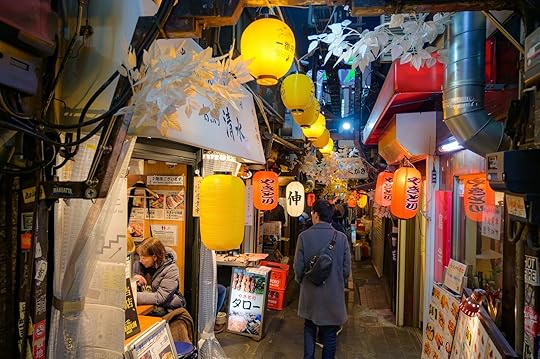 Photo: aon108/Shutterstock
Photo: aon108/Shutterstock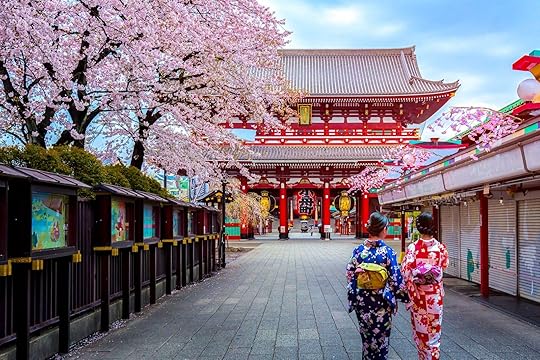 Photo: Phattana Stock/Shutterstock
Photo: Phattana Stock/Shutterstock Photo: f11photo/Shutterstock Flight time: 14 hours, 30 minutesAirlines: United, ANALowest round-trip price in 2025: $805 via SkyscannerWhere to stay: The Top Tokyo Hotels in Each Must-See Neighborhood
Photo: f11photo/Shutterstock Flight time: 14 hours, 30 minutesAirlines: United, ANALowest round-trip price in 2025: $805 via SkyscannerWhere to stay: The Top Tokyo Hotels in Each Must-See NeighborhoodThere’s a certain thrill involved in departing one major global hub and arriving in another — especially when the latter is totally different than the former. And if you’re looking to save money on airfare, check out the rates for a direct flight to Narita International Airport, which are under $1,000 via Skyscanner for May, 2025. That’s also good news for skiers, since the low rates continue into December.
Tokyo is a cultural hotspot and a trendsetting capital, not just within the nation of Japan but throughout the world. You can spend days getting lost in the city’s art districts, historical sites, and shopping centers, experiencing the city’s very distinct historical and modern-day cultures and subcultures.
To capitalize on the country’s natural beauty in the fall, time your trip for November, when the Japanese maple trees (momiji) turn red. Much is said about Tokyo’s cherry blossom season in March and April, but autumnal leaf peeping in Japan is just as colorful (and usually more affordable). And Tokyo is so lively that there’s always something happening year-round.
Read more about Tokyo:5 Hidden Temples in Tokyo You Need to Visit12 Tokyo Airbnbs in the heart of the incredible cityThis Rowdy Alleyway Is the Best Place To Drink Beer and People Watch in TokyoHow To Explore Japan on the Country’s Bullet TrainsDirect Flights from LaGuardia Airport (LGA)
LaGuardia Airport (LGA) is in Queens, just north of Manhattan, and is the smallest airport in New York City. While LGA is generally reserved for domestic travel, the airport does offer a few direct flights from NYC to international locales, with non-stop flights to 84 destinations in four countries other than the US: Aruba, the Bahamas, Bermuda, and Canada.
The small airport is easy to navigate and reachable on the F or N subway lines. And since it’s only 10 miles from Manhattan, it’s cheaper and faster to reach by taxi than other other New York airports, especially if you’re uptown or on the east side. Plus, the recent renovations have been hailed as both innovative and luxurious, and the full $8 billion redesign will be complete by the end of 2024.
Flights to Toronto from NYC Photo: R.M. Nunes/Shutterstock
Photo: R.M. Nunes/Shutterstock Photo: Diego Grandi/Shutterstock
Photo: Diego Grandi/Shutterstock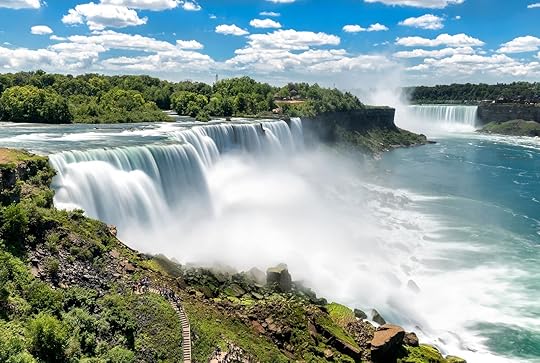 Photo: Jam Norasett/Shutterstock
Photo: Jam Norasett/Shutterstock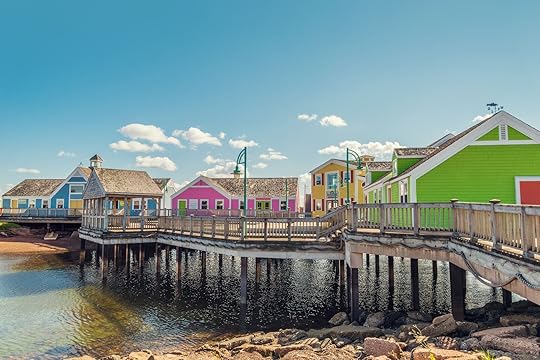 Photo: Vadim.Petrov/ShutterstockFlight time: 1 hour, 40 minutesAirlines: Air Canada, United, WestJet, DeltaLowest round-trip price in 2025: $165 via SkyscannerWhere to stay: 8 Hotels in Toronto With Outstanding Service and Proximity To Must-See Attractions
Photo: Vadim.Petrov/ShutterstockFlight time: 1 hour, 40 minutesAirlines: Air Canada, United, WestJet, DeltaLowest round-trip price in 2025: $165 via SkyscannerWhere to stay: 8 Hotels in Toronto With Outstanding Service and Proximity To Must-See AttractionsConsider a trip up north with a jaunt to Ontario. Toronto Pearson International Airport is just under a two-hour direct flight from NYC’s LaGuardia, and prices are extremely reasonable year-round. Toronto is Canada’s largest city and home to impressive art galleries and museums — not to mention the Hockey Hall of Fame (a tribute to the most Canadian of sports).
Toronto is an ideal place to spend a cosmopolitan weekend exploring award-winning restaurants and outdoor festivals, or doing some nearby sightseeing. Iconic Niagara Falls is nearby (and much more beautiful on the Canadian side), as is Prince Edward Island, a coastal oasis with red-sand beaches every bit as gorgeous as the pink sands of the Bahamas.
Read more about Toronto:The Best Airbnbs in Downtown Toronto, From the Harbourfront To the CN TowerThe Ultimate LGBTQ+ Guide To TorontoFlights to Spain from NYC
You Can Ride This Train for 2775 Miles Across Canada’s Cities, Prairies, and Rocky MountainsThe Most Diverse City in the World Also Has Its Most Exciting Food Market
 Photo: steve bridge /Shutterstock
Photo: steve bridge /Shutterstock Photo: Milan Skypol /Shutterstock
Photo: Milan Skypol /Shutterstock Photo: jackbolla /ShutterstockFlight time: 2 hours, 20 minutesAirlines: American Airlines, Air FranceLowest round-trip price in 2025: $551 via Skyscanner
Photo: jackbolla /ShutterstockFlight time: 2 hours, 20 minutesAirlines: American Airlines, Air FranceLowest round-trip price in 2025: $551 via SkyscannerVisiting Madrid or Barcelona in summer is the stuff of Eurotrip dreams. Spain is the place to be from May until the seasons change, and with these flight deals from La Guardia to Madrid and elsewhere in the country, you can splurge a bit on an Airbnb while you’re there. Plan to take your trip to Seville and into Basque country, where you can eat some of the best cuisine in the world.
In Madrid, the Royal Palace is a must-see, and an afternoon should be blocked to stroll through the art-filled halls of the Prado Museum. Also experience Plaza Mayor and the lush greenery of Retiro Park. In Barcelona, you can admire the breathtaking architecture of Antoni Gaudí, especially the Sagrada Família and Park Güell. Stroll down La Rambla to experience the city’s lively street life and explore the historic Gothic Quarter.
Read more about Spain:Grab Your Friends and Live the Good Life on a Trip to MadridSeville Is One of Europe’s Underrated Cities. Here’s Where to Stay for a Cultural Trip to Spain.This Little-Known Luxury Train Is the Spanish Equivalent of the Orient ExpressMadrid Neighborhood Guide: 4 City Districts for Getting Off the Beaten PathHow to Plan the Perfect Two-Week Itinerary for a Trip to SpainFlights to the Bahamas from NYC
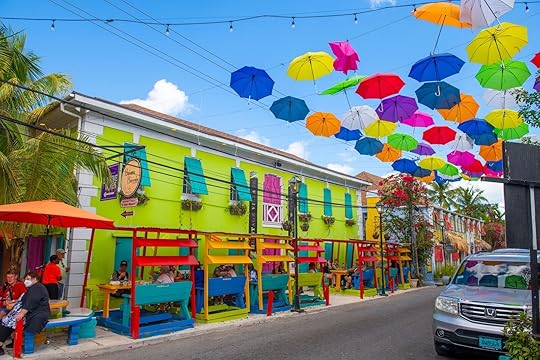 Photo: Wangkun Jia/Shutterstock
Photo: Wangkun Jia/Shutterstock Photo: Denis Moskvinov/Shutterstock
Photo: Denis Moskvinov/Shutterstock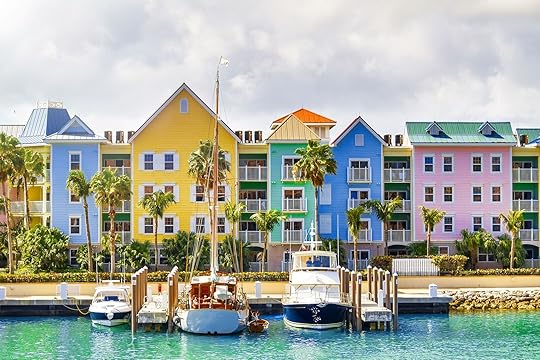 Photo: GagliardiPhotography/Shutterstock
Photo: GagliardiPhotography/Shutterstock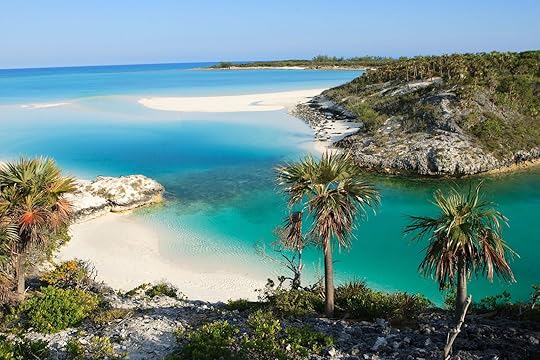 Photo: Daniel Sockwell/ShutterstockFlight time: 3 hours, 15 minutesAirlines: JetBlueLowest round-trip price in 2025: $363 via SkyscannerWhere to stay: 17 of the Most Breathtaking Airbnbs in the Bahamas
Photo: Daniel Sockwell/ShutterstockFlight time: 3 hours, 15 minutesAirlines: JetBlueLowest round-trip price in 2025: $363 via SkyscannerWhere to stay: 17 of the Most Breathtaking Airbnbs in the BahamasThere are few things more refreshing than departing the big city for the tropics, and to boot, flying to The Bahamas from NYC is cheaper than flying to many domestic destinations. You can get there fast and then take it slow. Beach Boys, anyone?
While there are few Caribbean destinations as well-known as the Bahamas, the nation’s capital of Nassau still holds many surprises and delights for first-time visitors and return travelers alike. If you’re not into all-inclusive resorts, leave them behind for a stay at Compass Point (a favored recording destination of both Bob Marley and The Rolling Stones) and venture out on a walking food tour of the city with Tru Bahamian Food Tours, which provides guests with a fascinating history of the capital (and plenty of rum, of course). Nearly any other tropical activity you can imagine is also an option, from snorkeling to sunset cruises to stand-up paddleboarding and even submarine tours. 
Read more about the BahamasThe 8 Best Conch Shacks and Restaurants in the BahamasThe 13 Most Stunning Pink-Sand Beaches in the WorldAn Inside Look at Baha Mar’s Massive New Water Park, Complete With 24 SlidesYou Can Take an Easy Day Trip To the Bahamas on This Florida FerryMore like thisBeaches and IslandsThe Best Beaches for a Long Weekend Trip From New York City
Exploring Copenhagen During Dark Season: World-Class Food, Saunas, and Culture

“You chose February to come to Denmark for the first time?” Andrea, my bartender at T37 — a sleek New Nordic cocktail bar in Copenhagen — asked, her eyes wide with disbelief. She was an expat from Spain with an instinctive aversion to Scandinavia’s virile winters. Didn’t I know, she pressed as she poured another glass of Gammel Dansk, how heavenly Copenhagen was in the summer? She painted a vivid picture of outdoor concerts, buzzing waterfronts, and a collective euphoria sparked by endless daylight and perfect weather. My reasoning must have sounded absurd, but it was sincere: I chose to come during the coldest, darkest stretch of the year out of literary reverence.
As an awkward but ardent teenager, I found a kindred spirit in Hamlet — Shakespeare’s introspective and hopelessly romantic Danish prince. Later, in an introductory philosophy course, I encountered Søren Kierkegaard, and his haunting meditation on faith and heroism, Fear and Trembling, profoundly reshaped the way I saw the world. At the bar, I promised Andrea I’d return one day to revel in Copenhagen’s vernal joys. For my first visit, I wanted cold sea winds and long, dark nights; incandescent sunsets and mornings cloaked in mist. In other words, the brooding climate evocative of my Danish literary heroes.
Winter, I discovered, brings a host of quirky delights to Copenhagen. With fewer tourists and more locals about, the city feels more intimately Danish this time of year. It’s the season of hygge, that famously untranslatable word conjuring the cozy bliss of sharing drinks in a snug pub while snow dusts the streets outside. Copenhagen’s world-class culinary scene dazzles year-round, but winter brings its own special treats: richer fishes and oysters, dark malty beers, and fastelavnsboller (cream-filled, cardamom-scented pastries traditionally enjoyed before Lent).
Winter in Copenhagen is a time to bundle up, slip a pocket-sized copy of Kierkegaard into your coat, and savor the raw, brooding charm of the colder months.
Where to eatCopenhagen, glittering with Michelin stars, is a vaunted gastronomic capital on par with Tokyo, Paris, or New York City. Noma, crowned the world’s best restaurant five times, helped make Copenhagen the leader of the New Nordic food movement that emphasizes foraged ingredients; minimalism; and seasonal, hyper-local produce. New Nordic restaurants tend to steal the spotlight, but the city’s Italian and Japanese restaurants are equally impressive and rival the best in Manhattan. Traditional Danish cuisine — crispy fried pork belly, smørrebrød, and plenty of seafood — offers its own quiet allure. I recommend splurging on at least one meal at a New Nordic restaurant, then rounding out your culinary tour with a medley of Italian, Japanese, and traditional Danish meals.
Caronte
Photo: Johnny Motley
As a mythology nerd, I couldn’t resist stopping into Caronte — a restaurant named after Charon, the ferryman of souls in Greek and Roman lore. I intended to stay for just a drink, but the bartender and general manager, Dario, was such good company that I lingered late into the night, sampling nearly the entire menu. I’ve spent a fair amount of time in Italy, and I’ll gladly attest that Caronte’s pastas, risottos, and charcuterie hold their own against anything I’ve tasted in bella Italia. Founded by two sommeliers, the wine list is delightfully offbeat, showcasing Italian grapes like grillo, fiano, and pignolo that can be hard to find outside of Italy. Whatever else you order, don’t skip the pumpkin. I don’t typically like squash, but Caronte’s balsamic-glazed pumpkin is so delectable I’d request it as my death row meal.
Caronte: Fadet 31, 1799 København V, Denmark
Kappo AndoJapanese and Scandinavian cuisines have always struck me as kindred spirits with a shared reverence for seafood, pared-down recipes, and a commitment to minimizing waste. Kappo Ando, helmed by Japanese chef Akiko Ando Levinsen and her Danish husband, chef Henrik Andō Levinsen, serves spectacular sashimi and maki using fish sourced locally from the North Sea. The sake list is encyclopedic. But the star here is yakitori: skewered meat delicately charred on a blazing hot grill fired with Japanese charcoal. For condiments, just a touch of salt or a kiss of house-made yuzu kosho (a citrusy chili paste).
Kappo Ando: Øster Farimagsgade 93, 2100 København, Denmark
Restaurant Levi
Photo: Levi
At Restaurant Levi, chef Gabriele Rizzo masterfully blends Japanese and Italian cuisine with hints of New Nordic flourish. Rizzo is an alum of Geranium, one of Copenhagen’s most acclaimed New Nordic restaurants, and that influence can be seen with dishes like venison garnished with fresh violets. For dessert, order the pistachio ice cream. It’s made with olive oil instead of cream and is as light and delectable as a Sicilian breeze.
Restaurant Levi: Ny Østergade 24, 1101 København, Denmark
POPLAfter working at Noma, Finnish chef Toni Toivanen opened POPL, bringing the finesse, artistry, and locavorism of New Nordic cuisine to burgercraft. The classic cheeseburger is made with an organic beef patty, cheddar cheese, house-made pickles, and a whisper of light sauce. If a heavenly archetype of a smash burger exists, this is it. POPL also offers seasonal specials that lean more adventurous. When I visited, it was a venison burger draped in pine aioli. POPL’s house-made soft drinks are as thoughtful and delicate as the food — I ordered a pink lemonade steeped with cold sencha to pair with my cheeseburger.
POPL: Strandgade 108, 1401 København, Denmark
SURTGiuseppe Oliva was an Italian sea captain in a former life. Now, Oliva is the head chef at SURT, a renowned pizzeria in Copenhagen’s Carlsberg District. Hailing from a long line of Sicilian bakers, Oliva brought his family’s generations-old sourdough starter to Denmark. The same culture, which he calls “the taste of Sicily,” leavens the crusts of his wood-fired pies. Oliva imports his tomatoes from a small farm on the slopes of Mt. Vesuvius, and they arrive like little red orbs of pure Sicilian sunshine. SURT’s wine list is a tight, thoughtful selection, featuring bold southern Italian wines to complement the pies.
SURT: Bag Elefanterne 2, 1799 København, Denmark
Where to drink in CopenhagenCopenhagen DistilleryCopenhagen Distillery crafts some of the finest whiskey money can buy, and I say that as a whiskey writer who has sampled the finest drams in Scotland and Japan. Head distiller Lasse Öznek left a career in pharmaceutical chemistry to pursue his passion for whiskey-making, and his operation runs with the precision of an elite laboratory. When you visit the tasting room, don’t miss Bone and Blood. This whiskey is infused with deer blood and ground bones — Öznek’s homage to Danish hunting culture. It’s smokier than Ardbeg and exquisitely funky and earthy.
Copenhagen Distillery: Kløvermarksvej 70d, 2300 København, Denmark
Bird
Photo: Johnny Motley
New Nordic bravura extends seamlessly into Copenhagen’s cocktail culture. Bird is a softly lit salon with vintage decor and walls lined with vinyl that pays homage to American jazz legend Charlie “Bird” Parker. Modeled after a Japanese listening bar, Bird pre-batches all its cocktails, allowing guests to savor the music and conversation without the clatter of ice machines or shakers.
Bird: Gl. Kongevej 102, 1850 Frederiksberg, Denmark
Lidkoeb
Photo: Johnny Motley
I never quite figured out how to pronounce Lidkoeb, but it’s a mixology tour-de-force. The atmosphere strikes a balance between a moody speakeasy and a lively neighborhood bar. It’s an industry-insider spot — on the night I visited, many of the patrons were bartenders themselves. The bar boasts an impressive lineup of Danish spirits, with boutique aquavits sharing shelf space with local whiskeys and gins. Tucked upstairs is a hidden whiskey library, stocked with rare finds from the hollers of Kentucky to the hills of Scotland.
Lidkoeb: Vesterbrogade 72B, 1620 København, Denmark
Activities in CopenhagenNational Museum of Denmark
Photo: Mellanie Gandø
I relish wiling away an afternoon in a good museum, but I feel guilty spending hours indoors when the weather is nice. Fortunately, in the winter in Copenhagen, I don’t have these qualms. The National Museum of Denmark houses an authoritative collection of Viking rune stones, granite stele in which Norse warriors carved spells and epitaphs. The museum also houses fascinating exhibits on pre-historic Denmark’s fauna and geology, and the Indigenous nations of Greenland.
National Museum of Denmark: Ny Vestergade 10, 1471 København K, Denmark
Designmuseum Danmark
Photo: Designmuseum Danmark
The most delightful surprise of my trip to Copenhagen was Designmuseum Danmark, a museum devoted to design. I’ve long admired the clean, minimalist aesthetic of Scandinavian clothing brands like 66°North and Fjällräven, and this museum offered a chance to explore that tradition more deeply. Housed in an exuberant Rococo building that once served as Royal Frederik’s Hospital, the museum has been a cultural institution since 1895. Exhibits showcase ceramics, furniture, fashion, and textiles from Scandinavia as well as China and Japan.
Designmuseum Danmark: Bredgade 68, 1260 København, Denmark
CopenHot
Photo: Daniel Rasmussen / Copenhot
Few things are as restorative as lounging in a sauna while snow falls gently outside the window. CopenHot, an outdoor spa on the edge of Copenhagen, offers multiple saunas, open-air jacuzzis, and cold plunges. As you schvitz and soak, you can order a kombucha, light beer, or a ginger shot — whatever your recovery ritual demands. After a few hours at CopenHot, you’ll feel right as rain, no matter how much aquavit you downed the night before. The vibe is relaxed and communal, with a healthy mix of locals and travelers sharing in the steam-soaked serenity.
CopenHot: Refshalevej 195, 1432 København, Denmark
Where to stay
Photo: Mellanie Gandø / Ottilla
We hope you love the stays we recommend! Just so you know, Matador may collect a small commission from the links on this page if you decide to book a stay.
Consider staying in the centrally located Carlsberg City District, which was once a self-contained company town built around the eponymous brewery that makes Denmark’s most well-known beer. A thick brick wall punctuated by gates as grand and ornate as those of a Viking chieftain’s hall still encircles the neighborhood. Despite its old-world feel, the district is well connected: a metro station just a 10-minute walk away offers easy, affordable access to the rest of Copenhagen.
Stay at Hotel Ottilia. The 19th-century building once served as the malt chamber for the Carlsberg Brewery. With weathered brick, massive concrete pillars, and exposed ceiling beams, its design is pure industrial-chic. The rooms are quiet and comfortable, and a laid-back, hostel-esque camaraderie permeates the lobby bar.
Book NowMore like thisSustainabilityDenmark's New 'CopenPay' Program Gives Travel Freebies to Eco-Conscious Visitors13 of the Most Scenic, Luxurious, and Activities-Packed Resorts in Maldives

When it comes to vacationing in paradise, destinations don’t get more idyllic than Maldives. The nation’s sugar-sand beaches and impossibly turquoise seas are like a postcard come to life, only prettier. The apparent remoteness of the islands adds to the allure and makes this Indian Ocean archipelago a special place to visit, and the now-iconic overwater villas are pretty cool, too. Here’s a selection of the best resorts in Maldives.
We hope you love the spaces and stays we recommend. Just so you know, Matador may collect a small commission from the links on this page if you decide to book a stay.
Baros Maldives
Photo: Baros Maldives/Facebook
Pristine white-sand beaches, a canopy of lush palms, and traditional thatched roof villas await at castaway island escape Baros Maldives, which has welcomed visitors since 1973 and won The World Travel Awards’ Most Romantic Resort in the World an impressive seven times. A slew of dining experiences caters to the culinary crowd, including a sunset dinner cruise for two aboard a “nooma” a traditional wooden Maldivian sailing vessel. Back at the resort, paddleboard across the lagoon, snorkel with Hawksbill turtles on the house reef, or sit in on one of the marine biology program presentations at the Marine Center. Depending on the season, nightly rates for seven different accommodation categories (pick from sunrise or sunset, beach or ocean views) range from $463 for a deluxe villa near the beach to $1,200 for a water villa with a private pool.
Cheval Blanc Randheli
Photo: Cheval Blanc
With its combination of lush garden jungle and turquoise waters, Cheval Blanc Randheli is an island paradise perfected. Located north of Malé in the Noonu Atoll, this second hotel venture from Louis Vuitton Moët Hennessy has opulent villas and a spa set on its own island offering dedicated Guerlain treatments. The resort even has a signature fragrance created by the head perfumer at Dior. From culinary classes and full moon yoga to the brand new surf simulator, guest experiences here are endless. Nightly rates fall across nine levels according to the time of the year and span from $2,200 (May through September) to $5,800 for a one-bedroom water villa (December through January).
Furaveri Maldives
Photo: Furaveri Maldives/Facebook
Set on a natural island in the northwestern Raa Atoll, scuba diving and swimming with manta rays are the highlights at Furaveri Maldives. Its 107 villas and overwater bungalows are dreamy: Imagine slipping off your private deck to snorkel over the coral reef or walking a few steps to Amigos at Furumathi for a sundowner cocktail. While an Ayurvedic treatment from the spa inside its dedicated Wellness Village will leave you relaxed for days, Insta-gold photo ops await, too. Don’t miss the sea swing or schools of baby blacktip reef sharks that can often be seen swimming in the shallows. With nightly rates ranging from $259 for a Garden Villa to $649 for a Sunset Ocean Pool Villa during their low season, Furaveri is a five-star luxury at an accessible price point.
Anantara Dhigu
Photo: Anantara Dhigu Maldives Resort
Thanks to a range of surf breaks on the island and nearby, Anantara Dhigu Maldives Resort is a favorite among the international surfer crowds. Watch expert-level riders as they charge house reef wave ‘Veli Left’ over a beer from Dhoni bar or sign up for a beginner lesson with Tropicsurf coaches François and Coline, who also run guided trips to outer reef breaks and farther afield to North Malé Atoll. With its pure white sands, crystal-clear blue waters and stunning views (especially from the infinity pool), nightly rates at Anantara Dhigu during low season range from $594 for a beachfront sunrise villa to $1,197 for an overwater pool suite, including breakfast and dinner.
Kudadoo Maldives Private Island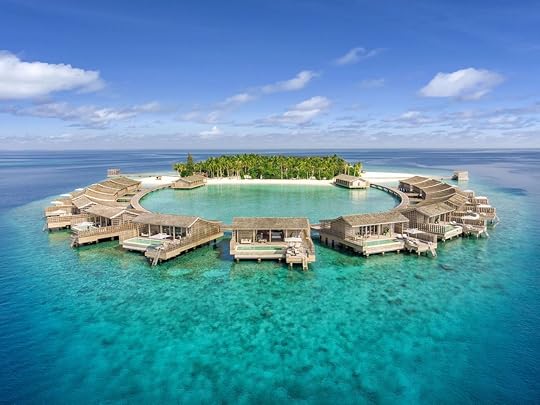
Photo: Kudadoo Maldives Private Island Resort
Encircled by a private beach and clear waters as far as the eye can see, the views are as stunning as you would expect them to be from this Robinson Crusoe style eco-paradise. With just 15 villa residences, the entirely solar-powered Kudadoo Maldives Private Island makes for an uber-exclusive intimate getaway with prices to match. Nightly rates start at $3,800, although Beach Pool Villas at sister property Hurawalhi Island Resort (home to the impressive 5.8 Undersea restaurant) begin at $750. You can walk the circumference of Kudadoo in 10 minutes, but it’s the underwater coral reef, home to Maldives’ largest population of turtles and mantas, that will keep you captivated. Being adults-only, it’s also a favorite among honeymooners and wedding parties.
Amilla
Photo: Amilla Beach Villa Residences
The chic overwater villas at Amilla Maldives Resort and Residences are dreamy, but guests are also going crazy for a new glamping experience at this ultra-luxe hotel in Baa Atoll. With a nightly rate starting at $750, three curated bubble tent packages are currently offered, including “Bubbles and Stars,” which comes with Champagne and a private chef dinner. For additional luxury amenities at Amilla, there are personalized Rolls Royce beach buggies, an overwater yoga pavilion, and a spa set among 400-year-old banyan trees.
COMO Maalifushi
Photo: COMO Hotels
Located in Maldives’ southern reaches, COMO Maalifushi is the first and only resort to open in Thaa Atoll. The atoll is home to a gorgeous stretch of beach and house reef teeming with colorful fish and corals. While Thaa Atoll is well known for its diving spots, it’s also a great place to see whale sharks, and during November and April, guests can take part in a guided night snorkel with these gentle giants. Sophisticated and beautifully styled, 65 villas, including beachfront suites and a two-story residence, are positioned around the island and cost upwards of $1,1000 a night. However, anyone interested in WFM (Working From Maldives) might like to jump on the new month-long package, which starts at $16,000.
Lily Beach Resort & Spa
Photo: Booking.com
Located at Huvahendhoo, the five-star all-inclusive Lily Beach Resort & Spa has two outdoor pools and five different dining options. But what really sets this property apart is its diving center. Guests can book ahead to enrol in a PADI course, or book casual day dives at various near-by reefs.
Raffles Maldives Meradhoo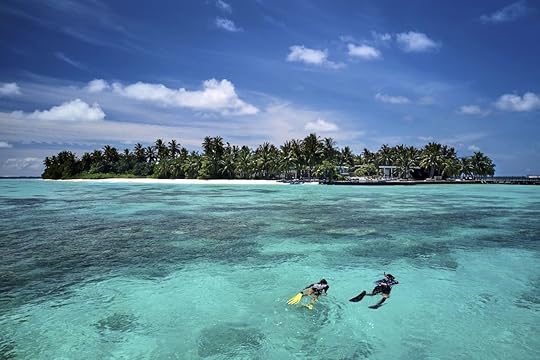
Photo: Raffles Maldives Meradhoo
At Raffles Maldives Meradhoo, the experiences are spectacularly five-star, and the luxury is unparalleled. Set on far-flung Gaafu Alifu Atoll, the palm tree-lined private island is home to some of the largest overwater villas and residences in Maldives, with nightly rates starting at $1,750. Take a guided snorkeling tour of the house reef with your dedicated marine butler or enjoy a whale shark encounter with marine biologist Giulia Pellizzato. The newest addition to Raffles Maldives’ guest offerings, though, is back on dry land. Recently opened, The Wine House features over 400 labels and tasting experiences, ranging from a chocolate and wine pairing to a Champagne flight.
The Nautilus Maldives
Photo: The Nautilus Maldives
With its swaying palms and thatched pavilions, The Nautilus Maldives in Baa Atoll is comprised of 26 houses across the island, each with a private pool, direct reef access, and postcard-perfect views. Wellness is a top priority with July 2021 being dedicated as the resort’s first Holistic Spa Month to coincide with the launch of experiential journeys inspired by Taoist practices and Tibetan philosophies. Travelers looking for thrills will love the 12,000-foot solo or tandem skydiving experience. Despite the nightly rates also being sky-high (they start at $3,800) Nautilus really is the resort that bucket-list dreams are made of.
Mercure Maldives Kooddoo
Photo: Booking.com
Mercure Maldives Kooddoo has 43 Over-Water and 25 Beachfront villas and one of the most appealing all-inclusive packages out of all of the Maldives resorts. Another major selling point is its spa which is marine-themed and very popular with past guests.
Meeru Island Resort & Spa
Photo: Meeru Island Resort & Spa/Facebook
Despite being the third-largest resort in Maldives, Meeru Island retains a relaxed atmosphere and some of the most approachable pricing with nightly specials from $518 in low season and $716 at peak times. From the freshwater swimming pools and nine-hole golf course, diving, and water sports centers to the spa (of which there are two) plus a long list of excursions, you will be hard-pressed to run out of things to do here. Located at the water’s edge and a popular meet-up spot, head to Dhoni Bar for drinks and the best sunset views on the island.
Pullman Maldives All-Inclusive Resort
Photo: Booking.com
Rated one of the best all-inclusive Maldives luxury resorts, Pullman is located in southern Maldives in Gaafu Alifu Atoll. The resort has six restaurants to choose from including a vegan eatery. They also offer a huge range of watersports, outdoor group activities, and a modern fitness center.
Getting to MaldivesGetting there from the United States takes time. At a minimum, expect upwards of 19 hours and at least two flights depending on layovers via cities such as Istanbul or Dubai.
Resort staff will be on hand to greet you upon landing at Velana International Airport and assist with onward connections. Some guesthouses on local islands can be reached by public ferry, but it’s essential to book ahead for private resort transfers. A seaplane ride (20 to 60 minutes) with Trans Maldivian Airways adds a touch of wow to any arrival experience; however, many resorts can also arrange speedboat transfers (15 minutes to two hours) and domestic flights or a combination of the two.
Where to stay in MaldivesWith 1,192 coral islands and more than 150 eye-catching private island resorts spread out across North and South Malé Atolls, transfer times, activities, and budgets all play a part in deciding where to stay. South Malé Atoll comprises 30 islands and is considered one of the best places to snorkel with whale sharks year-round. You’ll find a higher concentration of resorts in North Malé Atoll, home to UNESCO biosphere reserve, Baa Atoll, the world’s largest manta ray feeding station. Waves in the North and Central Atolls draw surfers when swells pick up from April through October.
Whether coming to scuba dive, bliss out on a spa getaway, or take the honeymoon of a lifetime, here are the 10 of the most scenic and peaceful resorts in the Maldives.
Which is the best Maldives island to stay on?The best Maldives island to stay on is dependent on what kind of vacation you are looking for and who you are traveling with. If you are looking for adult-only Maldives resorts, using that filter on a platform such as Booking.com, is a quick way to find a Maldives resort that suits your needs. Plan a trip to Maldives far in advance and do research — it’s a trip of a lifetime after all.
What is the average cost of a trip to the Maldives?A Maldives vacation on a budget is possible, but you should budget for around $3,500 for one of the Maldives luxury resorts. One of the most expensive elements will likely be the flight. From there you can plan ahead, go in the low season, and shop around for one of the Maldives all-inclusive resorts which often have decent package deals. 
April 16, 2025
Marie Kondo Pivots to Travel With New ‘The Best You’ Campaign

Visitors to the Tokyo Tower on a recent sunny afternoon may have found themselves doing a double-take towards the observation deck. There, clad in her trademark minimalist, elegant, and softly feminine attire accented by a sleek, straight bob falling chin-length, was the purveyor of simplistic joys herself, Marie Kondo, doing the robot dance. The unusual scene was a testament to Kondo stepping outside her bubble, though it’s all part of a larger plan. Kondo recently partnered with tour and experience curator Klook to produce an itinerary and video series called “The Best You,” in which Kondo travels to Tokyo and elsewhere in Japan in search of her freshest and most authentic self. Her aim is simple: to help others find a new self through travel.
“Truly, for me, Kurukuru’s message itself is very simple, to find a sparking joy experience anytime, anywhere, so this time my message of sparking joy, which I always convey, has a very strong affinity, and I am very happy to be working together” Kondo told Matador.
Kurukuru, a partner in the campaign promotes joyful experiences anytime, anywhere – and the partner’s name became a central ethos to the campaign. The Japanese concept of kurukuru, which roughly translates to “spinning around” – and rather than sowing chaos it’s intended to help a person find joy and excitement. Klook and Kondo came together to launch a Marie Kondo-themed itinerary in Japan, aimed at US travelers, that includes the same robot dance lesson she took, along with a Samurai experience and a Kintsugi Experience, which involves repairing broken ceramics — perfectly in-line with Kondo’s “joy sparking” mantra.
Sparking joy through travel: Marie Kondo’s take on the vagabond life
Photo courtesy of Klook
“I really love the idea of finding my most authentic self,” Kondo says, noting that through travel, she’s able to “refresh herself and recenter her mind” as she “absorbs the energy of the destination she travels to.”
Indeed, the internationally best-selling author of 2011’s The Life-Changing Magic of Tidying Up found herself in some novel situations while working on “The Best You” project. In addition to her robot dance shenanigans, she practiced Japanese swordfighting and experienced the chaos of Harajuku, central Tokyo, in her quest to find her best self.
Marie Kondo’s current definition of finding joy has evolved to encompass a broader, more dynamic view, particularly influenced by her participation in the Best of You campaign. She now sees travel as a powerful tool for self-rediscovery and transformation—what she describes as a “gateway to becoming the version of yourself you didn’t know you were looking for.” Kondo expresses a deep love for the idea of finding her most authentic self through travel, feeling that each destination offers a chance to absorb new energy and become a refreshed, evolved version of herself.
A key part of this evolving philosophy is being open to new experiences that touch the heart. Kondo actively embraces unfamiliar moments, such as participating in a “金 works” session where she performed a robot dance at Tokyo Tower—an experience she describes as helping her uncover “the best side of me.” This openness aligns with her original “spark joy” mindset but now branches into new territories, blending seamlessly with the ethos of
Ultimately, Kondo’s pursuit of joy now includes elements of personal growth, mental renewal, and transformation. She highlights how travel allows her to refresh and recenter her mind, deepening the sense of clarity and wonder that joy brings. While tidying remains at the heart of her philosophy, Kondo now embraces joy as something that can also be found through exploration, reinvention, and the uplifting experiences that life—and travel—have to offer.
More about The Best You campaign
Photo courtesy of Klook
The Best You campaign, launched by Klook—a leading platform for travel and experiences in Asia—is a global initiative that reimagines travel as a journey of personal transformation. As Kondo herself found, travel helped her learn to “always be open to new experiences, to never stop searching for things that touch my heart.”
The campaign encourages individuals to discover previously unexplored aspects of themselves through meaningful experiences – not just traveling to tick off a list or to see a place, but to actually pursue personal growth. By seeking clarity, joy, and growth, the campaign posits that you can travel not just as a getaway, but as a catalyst for rediscovery and emotional connection.
“I’m coming back to where it all started, to discover what can spark joy in this new phase of my life,” Kondo says. “I want to always be open to new experiences, to never stop searching for things that touch my heart,”
Kondo embraces this new phase in her life by exploring unfamiliar experiences that bring joy and self-discovery. She partnered with Klook to curated an itinerary called “Walk in Marie Kondo’s Footsteps” for those visiting Japan. This includes experiences like a samurai workshop for balance, a kintsugi session to appreciate imperfection, and robot dance classes similar to Kondo’s. The campaign also features a personality quiz that helps users discover one of eight travel archetypes, unlocking personalized experiences tailored to their journey of self-discovery.
Watch Marie Kondo’s “The Best You” episode below. 
https://youtube.com/watch?v=VP9c7Lq20...
More like thisCultureHow Feng Shui Can Make You Feel Cozier at Home, According to Experts17 Airbnbs in Istanbul to Experience the Best of the City

There aren’t many cities that straddle two continents. If that phenomenon alone isn’t enough to lure you to Istanbul, Türkiye’s largest city, how about the promise of a purifying Hamman and a scenic cruise past the iconic Hagia Sophia and Blue Mosque? Istanbul’s accommodation scene is just as thrilling as the city itself with luxurious lofts filling centuries-old buildings. Here are the best Airbnbs in Istanbul, Türkiye, with roof decks, secret gardens, and unique decor.
Matador’s guides to the best of Airbnb Categories:10 Remote, Off-The-Grid Airbnbs Where You Can Get Away From It AllThe 11 Most Beautiful Converted Churches You Can Stay in Around the World on AirbnbAirbnb Just Made Windmills a Category, and These 9 Have Us Planning a TripAirbnb Now Has a Towers Category. These 9 Will Climb Your Bucket ListAirbnb Launched a Tiny Homes Category, and We’re Already Planning Trips Around These 1111 Properties in Airbnb’s New OMG! Category You Won’t Believe Are Real
We hope you love the Airbnb Istanbul vacation rentals we recommend! Just so you know, Matador may collect a small commission from the links on this page if you decide to book a stay. Listed prices are accurate as of the time of publication.
Istanbul Airbnbs near Galata TowerIstanbul Airbnbs near Istiklal Avenue and the Blue MosqueAirbnbs in Cihangir, IstanbulIstanbul Airbnb in Kadıköy and Büyükada, AdalarIstanbul Airbnbs near Galata Tower19th-century luxury loft with patio near Galata Tower Photo: Airbnb
Photo: Airbnb Photo: Airbnb
Photo: Airbnb Photo: Airbnb
Photo: Airbnb Photo: Airbnb
Photo: AirbnbSee more photos
Recently renovated under the care of church renovation artists, this unique loft is presented with historic frescoes. High ceilings, vintage furnishings, and sublime fabrics add comfort to the property while the yard is perfect for morning coffee. Steps from the Galata Tower in the Beyoğlu district, this one-of-a-kind Airbnb is in the touristic heart of Istanbul.
Six guests, three bedrooms
Price: $275 per night
 Photo: Airbnb
Photo: Airbnb Photo: Airbnb
Photo: Airbnb Photo: Airbnb
Photo: Airbnb Photo: Airbnb
Photo: AirbnbSee more photos
A stone’s throw from the funky Karaköy harborside neighborhood, this Istanbul, Türkiye, Airbnb is ideal for larger groups. Divided into separate units, the property will appeal to those traveling as a couple of families. The roof terrace is rigged with a two-person hot tub that grants unbeatable views over the city.
Fourteen guests, seven bedrooms
Price: $600 per night
 Photo: Airbnb
Photo: Airbnb Photo: Airbnb
Photo: Airbnb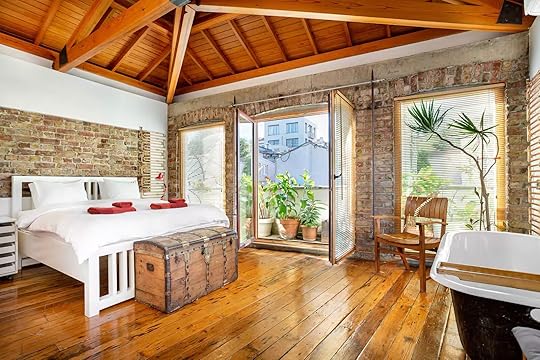 Photo: Airbnb
Photo: Airbnb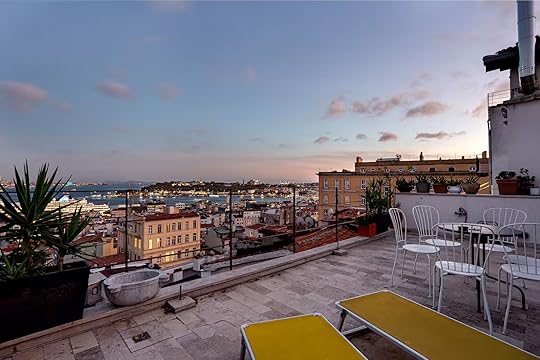 Photo: Airbnb
Photo: AirbnbSee more photosThis loft-style apartment with gorgeous vaulted ceilings claims the top floor of a heritage building in the Galata enclave. It has a furnished private terrace with views skirting the rooftops and reaching over the Bosporus Strait. The principal room has its own balcony and a luxurious clawfoot tub whereas the second is tucked away in the attic – kids love this spot. Speaking of which, the host can provide toddler and baby gear.
Four guests, two bedrooms
Price: $395 per night
 Photo: Airbnb
Photo: Airbnb Photo: Airbnb
Photo: Airbnb Photo: Airbnb
Photo: Airbnb Photo: Airbnb
Photo: AirbnbSee more photosThere’s no need to cough up the fee for the Galata Tower while staying at this super-centric apartment: Istanbul’s famous landmark is practically in your bedroom. Step out onto the rear patio – yes, there are two – and you’ll be greeted with a panoramic view of the Bosporus. The woody interiors and exposed brickwork create a calming ambiance, especially at night. Taking a long bubble bath in the stone soaker is mandatory.
Three guests, one bedroom
Price: $240 per night
 Photo: Airbnb
Photo: Airbnb Photo: Airbnb
Photo: Airbnb Photo: Airbnb
Photo: Airbnb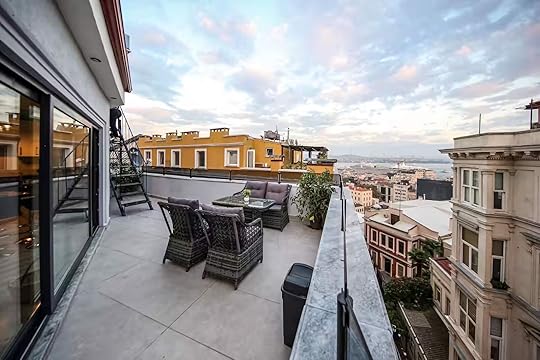 Photo: Airbnb
Photo: AirbnbSee more photosTen steps from the tower and five minutes from Istiklal Street – it doesn’t get better than that in Istanbul. This charming bolthole is located on the top floor of a historic mansion although the decor and amenities are as modern as you’ll find in Türkiye’s cultural capital. Note that it’s an 80-step climb to reach this Guest Favorite Airbnb. The level of comfort and views make it worth it, even during summer heatwaves.
Four guests, two bedrooms
Price: $437 per night
 Photo: Airbnb
Photo: Airbnb Photo: Airbnb
Photo: Airbnb Photo: Airbnb
Photo: Airbnb Photo: Airbnb
Photo: AirbnbSee more photos
Located in Sultanahmet 150 meters from Hagia Sophia and the Blue Mosque, Irini Seaview House is one of the most family-friendly vacation rentals in Istanbul. The townhouse spreads across three levels with the roof terrace providing heart-stopping Bosphorus views. With a daily maid service included in the rate, you can look forward to sinking into the freestanding tub after a day of touring the sights.
Four guests, two bedrooms
Price: $221 per night
 Photo: Airbnb
Photo: Airbnb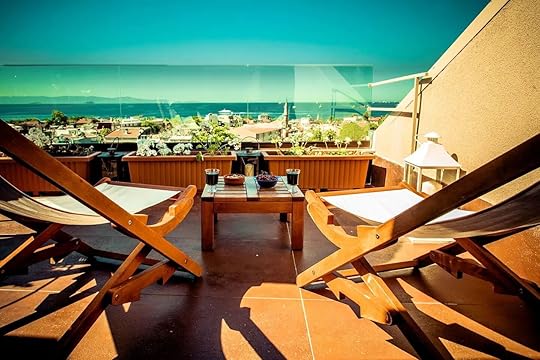 Photo: Airbnb
Photo: Airbnb Photo: Airbnb
Photo: Airbnb Photo: Airbnb
Photo: AirbnbSee more photos
Conveniently sited for walking to the Sultanahmet neighborhood and the Grand Bazaar, this Istanbul Airbnb with sea views is tucked away down a quiet street. The shed roof in the kitchen adds a kookiness while all three double bedrooms feature exposed brickwork. The terrace is prepped with deckchairs where you can sip Turkish tea and drink up Bosphorus panoramas.
Seven guests, three bedrooms
Price: $132 per night
 Photo: Airbnb
Photo: Airbnb Photos: Airbnb
Photos: Airbnb Photo: Airbnb
Photo: AirbnbSee more photosBeat the long lines at the Blue Mosque and Hagia Sophia while staying at this cozy one-bedroom rental. Consider taking your morning coffee (or Turkish tea) up to the shared rooftop terrace for a priceless perspective of both landmarks. The place has a small but well-equipped kitchen with a washing machine and a comfortable lounge where you can dive into your haul of market-bought confectionery and other delights.
Four guests, one bedroom
Price: $235 per night
 Photo: Airbnb
Photo: Airbnb Photo: Airbnb
Photo: Airbnb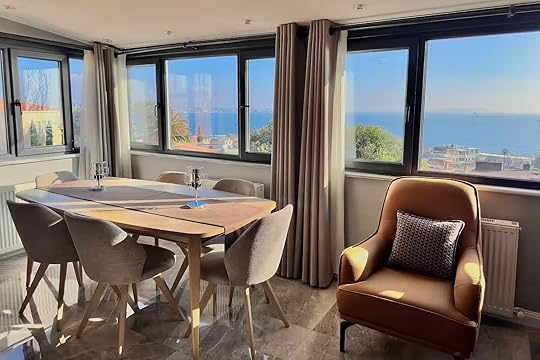 Photo: Airbnb
Photo: Airbnb Photo: Airbnb
Photo: AirbnbSee more photosSavor sea views from this luxury apartment near Hagia Sophia and the Blue Mosque and a strollable distance to this duo of unmissable Istanbul sights. The rental unit has a fully-equipped kitchen – which realistically isn’t going to get a look-in when you’re surrounded by Istanbul’s culinary hotspots – and a huge hot tub in the bedroom. It’s designed for a couple but kids could always bunk on the couches.
Four guests, one bedroom
Price: $326 per night
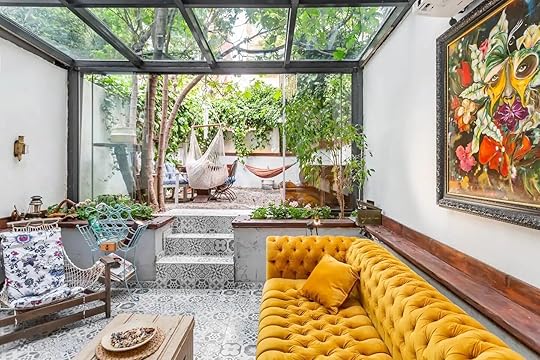 Photo: Airbnb
Photo: Airbnb Photo: Airbnb
Photo: Airbnb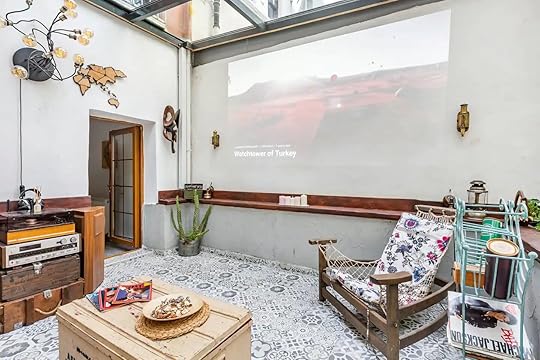 Photo: Airbnb
Photo: Airbnb Photo: Airbnb
Photo: AirbnbSee more photos
This pet-friendly Airbnb in Istanbul with a garden is teeming with bohemian character and zen vibes. Swing in the hammock or bask on the couch until nightfall when you can relocate to the covered yard complete with further botanicals and colorful art. Interiors are fashionably appointed and there’s a projector available for a Netflix binge over a homemade meze.
Seven guests, three bedrooms
Price: $320 per night
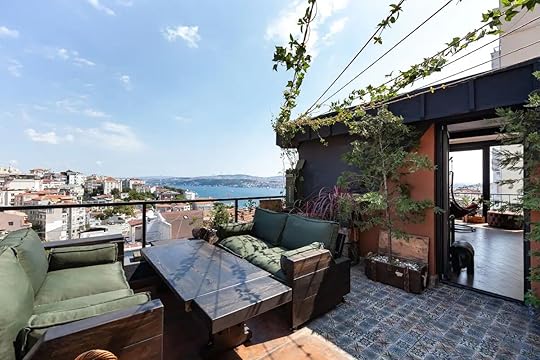 Photo: Airbnb
Photo: Airbnb Photo: Airbnb
Photo: Airbnb Photo: Airbnb
Photo: Airbnb Photo: Airbnb
Photo: AirbnbSee more photos
Sure, you’ll need to tackle four floors to get there but the reward is worth it at this loft Airbnb in central Istanbul, Türkiye. The presence of a suspended egg chair, a swinging dining bench, and panoramic views from the roof deck elude the sense of flying. You’ll have Cihangir’s awesome eateries right on your doorstep in addition to your own grill.
Four guests, two bedrooms
Price: $350 per night
 Photo: Airbnb
Photo: Airbnb Photo: Airbnb
Photo: Airbnb Photo: Airbnb
Photo: AirbnbSee more photosThis dreamy apartment rental in Istanbul exists in real life, it’s not an AI hoax. It has a beautifully bohemian lounge with an oversized couch, a balcony furnished for dining, and two bedrooms with macrame wall hangings. One has a reading nook overlooking the swirl of everyday life below while the larger suite has a wooden soaking tub. The Cukurcuma Street address is handy for cafe hopping and antiquing.
Four guests, two bedrooms
Price: $320 per night
 Photo: Airbnb
Photo: Airbnb Photo: Airbnb
Photo: Airbnb Photo: Airbnb
Photo: AirbnbSee more photosThe ink’s barely dry on the listing for this new Airbnb in Cihangir yet it’s already garnered Guest Favorite status. First of all, this isn’t your typical apartment; it’s a detached 100-year-old house spread over four floors. Each en suite bedroom sits on a different level with the kitchen and living room claiming the other two. Furnishings were selected based on comfort and aesthetic while the kitchen is designed for convenience and socializing.
Six guests, two bedrooms
Price: $277 per night
 Photo: Airbnb
Photo: Airbnb Photo: Airbnb
Photo: Airbnb Photo: Airbnb
Photo: Airbnb Photo: Airbnb
Photo: AirbnbSee more photos
Swap the museums for a night at this two-story Ottoman “köşk” built by a Greek architect in the 19th century. Period furnishings fill the villa while expansive windows allow the island air to circulate freely. Rental includes full access to the fruit-tree-laden garden. This Istanbul Airbnb on Büyükada is a 10-minute walk from the harbor where regular ferries connect to the mainland.
Six guests, five bedrooms
Price: $130 per night
 Photo: Airbnb
Photo: Airbnb Photo: Airbnb
Photo: Airbnb Photos: Airbnb
Photos: AirbnbSee more photosThis top-rated Kadıköy rental is located on a quiet street within walking distance of the neighborhood’s popular restaurants and cafes. It’s simply furnished with a cute galley kitchen and fresh turquoise accents which pop as the sunlight pours in through the huge windows. The seaside promenade and ferry port are each an easy 10-minute walk from the rental, from where you can plan an outing to the Adalar Islands.
Four guests, two bedrooms
Price: $170 per night
 Photo: Airbnb
Photo: Airbnb Photo: Airbnb
Photo: Airbnb Photo: Airbnb
Photo: Airbnb Photo: Airbnb
Photo: AirbnbSee more photosThis tiny house Airbnb in the Asian side of Istanbul is compact inside but the private patio more than makes up for it. Fringed with bamboo and strewn with trinkets, this is a zenful spot to plan a day exploring Kadıköy and the Princes Islands of Türkiye. The kitchen is strategically designed to maximize space and there’s even a washing machine. Given the size, it’s better suited to a solo wanderer or a couple who intend on spending most of their stay exploring.
Two guests, one bedrooms
Price: $80 per night
 Photo: Airbnb
Photo: Airbnb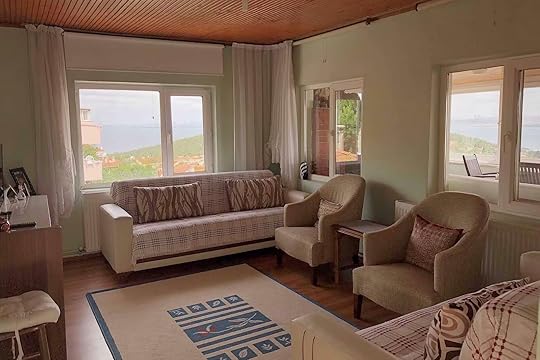 Photo: Airbnb
Photo: Airbnb Photos: Airbnb
Photos: AirbnbSee more photosThis spellbinding apartment is located on Heybeliada Island, the westerly neighbor of Büyükada. The views hog the limelight with the heated, screened-in patio ensuring comfort in any season. You’ll want to experience the scenery at all hours of day – and perhaps stretch to a sunrise coffee to complete the experience. The rest of the unit is simply attired yet functional and homely.

Four guests, one bedrooms
Price: $70 per night
Matador Network's Blog
- Matador Network's profile
- 6 followers



